The post Borders, Bandits, And Baby Wipes: A Big Adventure In A Tiny Car appeared first on The Expeditioner Travel Site.
]]>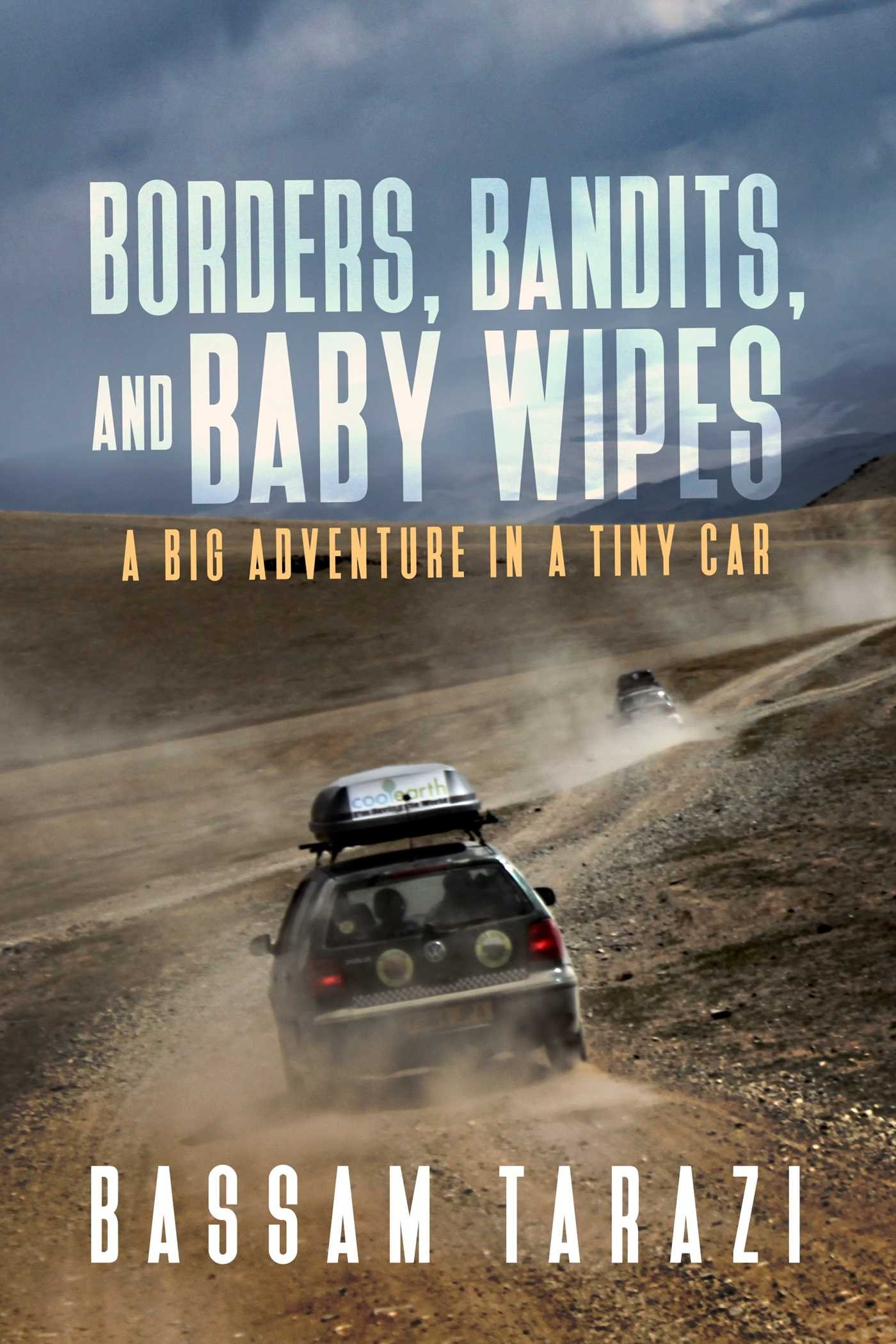
Inspired and challenged by his quests of “getting there,” Bassam Tarazi and two friends signed on for the infamous Mongol Rally, a nearly 10,000-mile road trip from London to Mongolia, through terrain that would make a mountain goat’s knees buckle, in a vehicle that was little more than a go-kart.
Borders, Bandits, and Baby Wipes is Tarazi’s incredible tale of what comes with life on the go and off the map. It’s a dive into cultures and cop cars, big thoughts and meltdowns, and what it means to be human while covered in a constant sheen of awe and grime. It’s a story about the kind of adventures we all said we’d have one day but never do. It’s about a world beyond our expectations, and of our place in it.
The following is an excerpt from the book, “Day 15,” the team’s blitz through Turkmenistan in search of the “Door To Hell.”
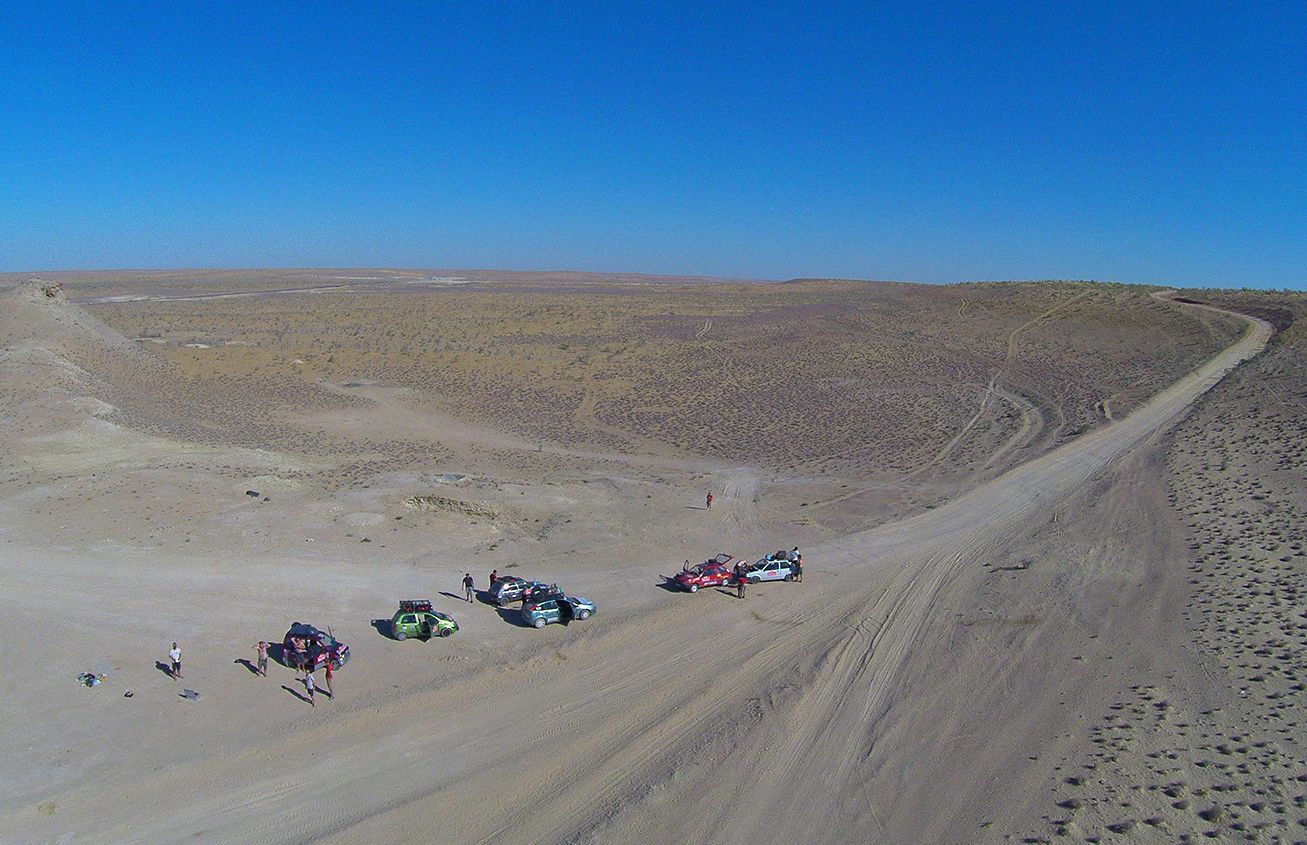
Day 15
The sheer enormity and unforgiving nature of the 135,000-square mile Karakum Desert was unleashed on Day Fifteen. Saying that the terrain was barren would be like calling the Himalayas “hilly.” Justice is only meagerly done with a description. All around us was solitude the color of uncooked pizza dough. The trillion grains of sand glittered in the sunlight like disco balls, so no matter where our gazes fell, our eyes were pierced by galactic bayonets. It was perpetual parchedness in a sea of sunshine.
Somehow, our car (call sign: Donata) handled herself shockingly well, but we couldn’t say the same for ourselves. The breeze provided by the slipstream of our open windows felt like we were downwind of a fan in the boiler room of a frigate. The dry air was a straw sucking moisture away from us before we even had time to sweat. The struggle against the heat was an act of physical combat. Brooke could not withstand the assault. Under a makeshift hijab, she was constantly battling chapped lips, watery eyes and blotchy skin. I kept reminding her to drink plenty of water because I was drinking twice the amount she was and my mouth had still turned into a desolate wasteland.
With Brooke wilting in the back seat, we followed the jet-black asphalt artery that twisted this way and that; its existence was not engineered, but conditional, determined by the desert’s good graces. If the wind shifted, the sand could slither over the roadway, erasing our umbilical cord to civilization. Thankfully, the single-lane road soon turned into multi lanes.
Despite the unpleasant reception we received from the topography, one of the things I’ll always remember about Turkmenistan is that random drivers on the highway greeted us with more friendship and cheer than in any other country. Either they respected that foreigners had figured out how to get into — and travel through — their country, or they knew about the rally passing by at this time of year. Whichever, we were rock stars.
If you open an atlas and turn the pages to Turkmenistan, the thing that you immediately notice is the absence of roads. You’d think that the cartographers miscommunicated about who was going to finish the map. There is one road that goes north-south through the entire country. One.
Our convoy drove north on that one road out of Ashgabat, hoping to reach Darvaza. Darvaza was the location smack in the middle of Turkmenistan that only existed as a destination because of a Soviet engineering failure. Back in the early 1970’s the motherland was tapping the area for natural gas, but when the ground underneath the drilling rig collapsed, it left a 230-foot-wide crater. The risk of fumes billowing and poisoning the locals was not ideal so they decided to set the gas alight, hoping it would burn off in a few days. It was now sixteen thousand days later. To-may-to . . . to-mah-to. This locally dubbed “Door to Hell” is a burning pit in the middle of the desert. We didn’t know if there were any signs for it but we were going to do our damndest to find it.
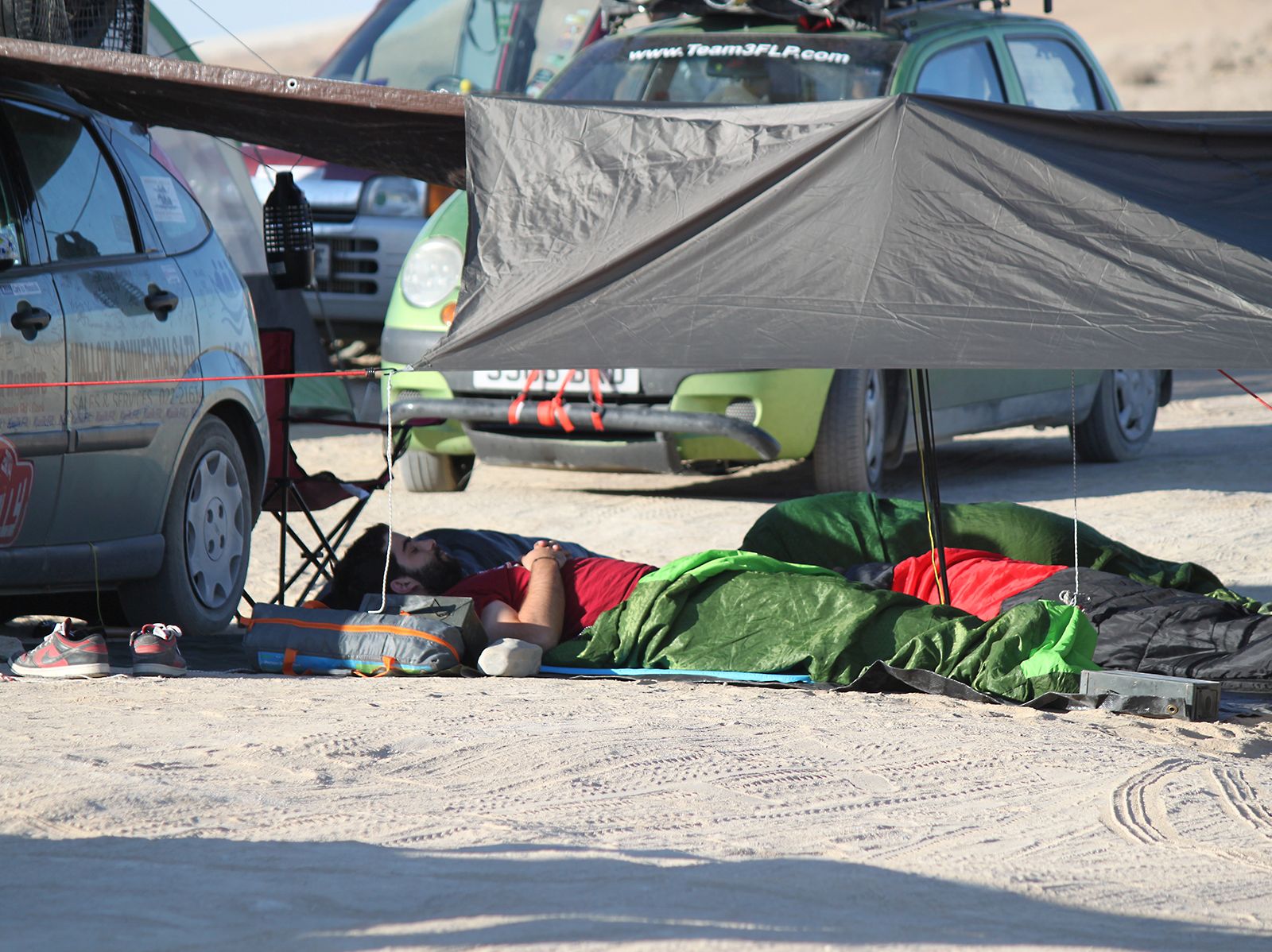
Beneath a postcard-worthy sunset we snapped photos and videos, zigzagging and overtaking one another while trying not to kill ourselves in the process.
From the east, a few lonely stars dragged their black paint behind them, covering the blues, pinks and oranges that the long-lingering sunset had brought. All of this, and yet still no crater. I don’t know what we thought would happen when we reached Darvaza, but we expected some sort of sign, some sort of glow, some sort of tire marks, some sort of something. For those who have driven on I-95 between North Carolina and South Carolina, we were guessing it was Turkmenistan’s version of South of The Border.
But there was nothing. We reached the railroad tracks, which according to our maps meant we had gone too far. You can imagine our dejection.
We asked a police officer stationed in a booth there. If anyone would know, it would be him. Turns out, he had never heard of it. Every single rally team we talked to who had done the trip had said that if we were going through Turkmenistan, we had to go see the crater at Darvaza. And this guy, who was from the country of the crater and probably the closest human to the thing, had never heard of it.
This would be like asking a Parisian taxi driver to take you to the Eiffel Tower and him saying, “The Eiffel what now?”
We decided to drive back south a bit to see if there was an inroad we had missed. In the eastern distance we saw vagrant car headlights ricocheting on the dunes. This must be a good sign. We soon found tire tracks veering off the road. A local drove by and confirmed for us, “Yes, big fire,” so we were in business, except that “in business” was at the far end of a dark horizon buried in sand.
Some of the ralliers got out and assessed the path. The Spaniards in the Peugeot had the most muscle and had seven (not kidding) spare tires, so they made the first attempt into the dust. From the road, we saw the headlights carom back and forth, while redlining RPMs and bumper cracks saturated our ears. Eesh, I’m all for a side trip, but there’s a difference between being adventurous and reckless. Our car was probably the least equipped of the group to make this off-road ramble, so like any smart team would, we let every other car go first to see if this jaunt was even possible.
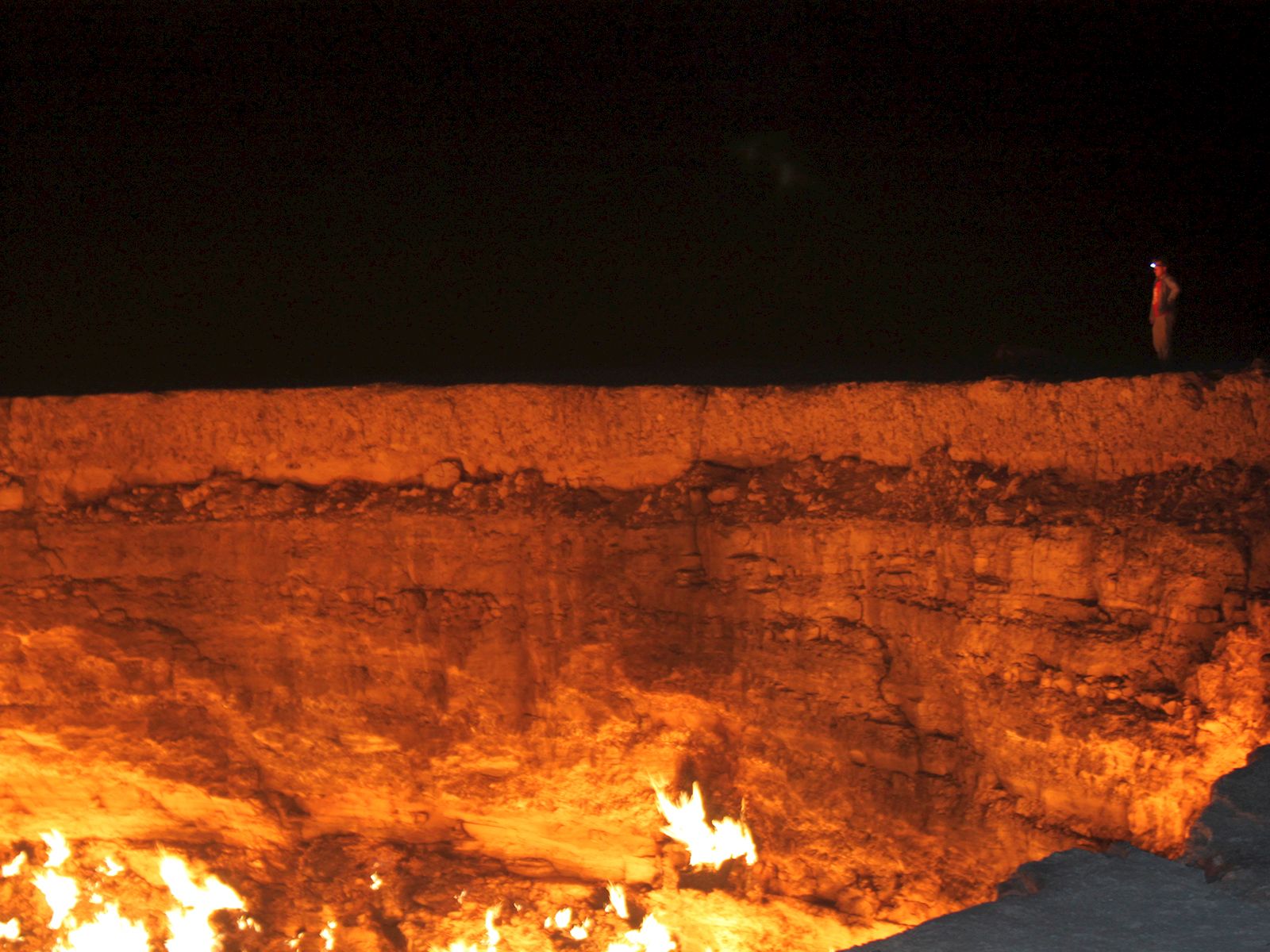
The Irish, God bless their confidence, got stuck in the really loose stuff, turning their tires into sand flingers. After digging them out with shovels and pushing the car with all our might back onto some packed sand, the remaining vehicles found the line that provided the best opportunity.
At some point on a trip like this, you can’t say no. You have to try, even if you think that there is no way you are getting out of the mess. With that, Greg drove into the powder. Donata huffed, puffed, swiveled and screamed but she reached the hard sand intact. I was proud of her. Really. I’m not a car guy but it was one of the rare moments in my life when I truly anthropomorphized an automobile.
The next leg of the journey was ambitious. It was a slight uphill drive that ended with a steep climb that spit us out onto a leveled plateau. The Peugeot went first. We heard the growl of the engine and saw their headlights go skyward and then swing down like a guillotine when the car went back horizontal over the lip of the plateau. Shit. That looked violent.
The remaining teams eyed the path repeatedly and those not driving stood with flashlights highlighting the best line up the hill. Part of me wanted someone to fail so that we could say, “Maybe we shouldn’t do this,” but every car summited. And so it was Donata’s turn again. Greg punched the gas and somehow maneuvered her up that hill and over the edge without tearing our sump guard or puncturing our gas tank.
He brought her to a stop behind the rest of the cars and we all celebrated our mini victory. Donata looked at us stoically, like an unheralded fullback. She acted like she’d been here before, that this was what she was made to do, that she was enjoying the Mongol Rally as much as we were. She believed in herself more than I did. I wanted to have sex with Donata.
Our celebration was short-lived. We were now further from help, had no real idea where the crater was and the night was total black. However, we did see a group of headlights below us off to our left that turned out to be other ralliers. They told us we were indeed in the right area, but there was no way for any of our cars to get to the crater. For ten dollars each, though, some locals would shuttle us back and forth in their two Toyota 4Runners.
Right then, said locals appeared. The 15 of us stuffed ourselves flank to shank inside the trucks and headed to the fiery pit of lore. Any notion that we could have made this trip in our own cars was erased as the 4Runners labored heavily for most of the 20-minute ride.
Suddenly, there it was, just as described! A burning hole in the ground about 50 yards deep and 100 yards across, spewed hell and brimstone in all directions. It might as well have been an open volcano. There were no railings, no signs, no nothing. If we had wanted to, we could have walked right over the edge without breaking stride.
When the wind shifted toward us, we had to hide our faces, turn, and run because it was too hot to endure. When the breeze was in our favor, we stared in complete bewilderment at what the earth hid in its bowels and what humans could do when they uncovered such power. It was one of the most shocking things I’d ever seen.
We rode the 4Runners back to our cars, made camp and bundled up. The difference in day to night temperature was easily 70 degrees. In our hoodies and sweatpants, we wolfed down our ramen noodles and talked to each other about where we’d been, where we’d go, but most importantly, where we were in the moment.
The stars that littered the sky that night were something to behold. The 2,500 or so stars that enveloped my vision were enough to get me to hyperventilate at the incomprehensibility that what I was looking at was only 0.0000025 percent of all the roughly one hundred billion stars in the Milky Way galaxy. Fragile little me, spinning around on a rock in space, peering into a tiny spot of our galaxy, and yet that spot is the most limitless thing I could ever see with my own eyes. It was a mental M.C. Escher moment complete with Mobius strips, infinite planes and stairs to nowhere. I felt like I was trying to hold gravity in my hands. I knew it was there, but I couldn’t grasp it.

/
 American born Bassam Tarazi is half Palestinian and half Dutch. He is the founder of Colipera, a motivational blog, and an author, speaker, and international traveler. A wanderer at heart, Tarazi co-founded the Nomading Film Festival, has traveled to 7 continents and 72 countries, and is always looking for his next adventure.
American born Bassam Tarazi is half Palestinian and half Dutch. He is the founder of Colipera, a motivational blog, and an author, speaker, and international traveler. A wanderer at heart, Tarazi co-founded the Nomading Film Festival, has traveled to 7 continents and 72 countries, and is always looking for his next adventure.
The post Borders, Bandits, And Baby Wipes: A Big Adventure In A Tiny Car appeared first on The Expeditioner Travel Site.
]]>The post Five New Travel Books To Take On Your Next Vacation appeared first on The Expeditioner Travel Site.
]]>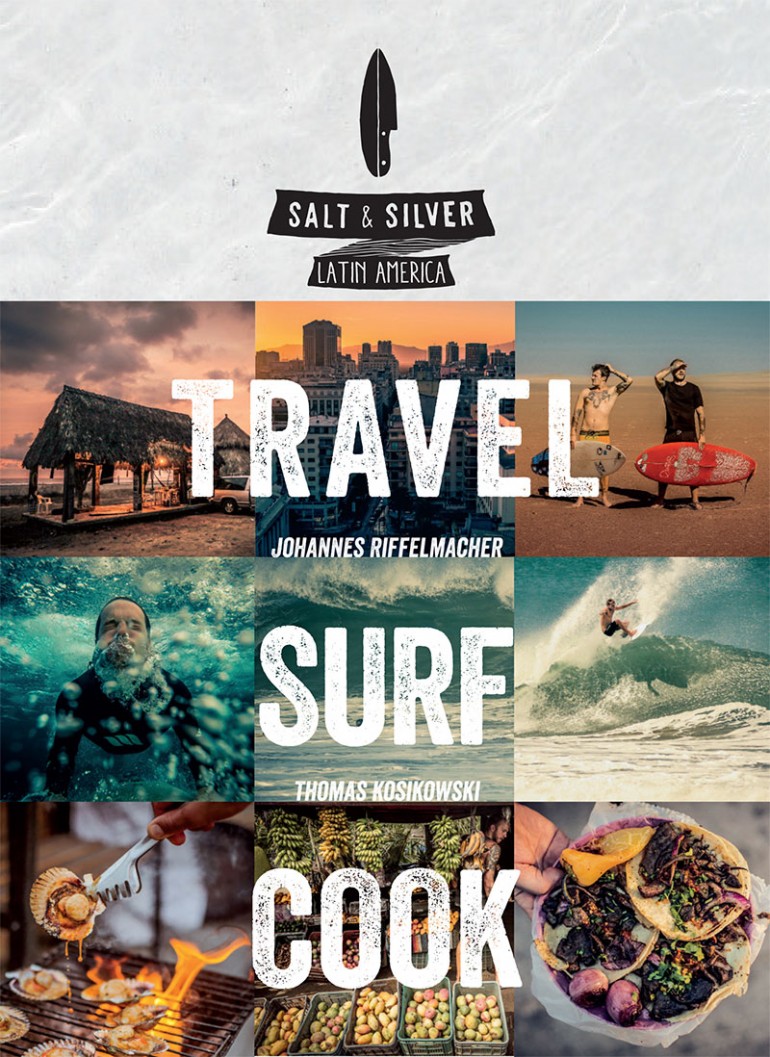
Salt & Silver: Travel, Surf, Cook
In January of 2014, two German Surfers quit their jobs and headed out into the world with nothing but two surfboards, a sharp knife, board shorts, and a backpack full of photo equipment with the goal of finding the best waves and local cuisine in Latin America. They spent a year on the road, starting in Cuba and moving down the Pacific coast of Mexico to Patagonia.
The result is Salt & Silver: Travel, Surf, Cook — part travelogue, part cookbook — which traces the journey of Johannes “Jo” Riffelmacher and Thomas “Cozy” Kosikowski as they travel through Central and South America in search of the best surfing locations and food the continent has to offer. The books spans the local culture of eight countries, exploring the surfing communities, urban graffiti scenes, fishing villages, beaches, waves and kitchens of Cuba, Mexico, Nicaragua, Costa Rica, Panama, Ecuador (including the Galapagos Islands), Peru and Chile.
Inside, you will find over 90 recipes including: Tiradito de Atun con Aji Amarillo (Fresh Tuna With Pepper Sauce), Lobster Tails with Lemon-Garlic Butter, Lamb Tacos, Alino Criollo (Cuban Hot-and-Sour Sauce), Grilled Vegetable Teriyaki Salad, Panama Burgers with Homemade Buns, Tropical Pancakes, Breakfast Granola and Homemade Surf Wax (this one’s for your surfboard).
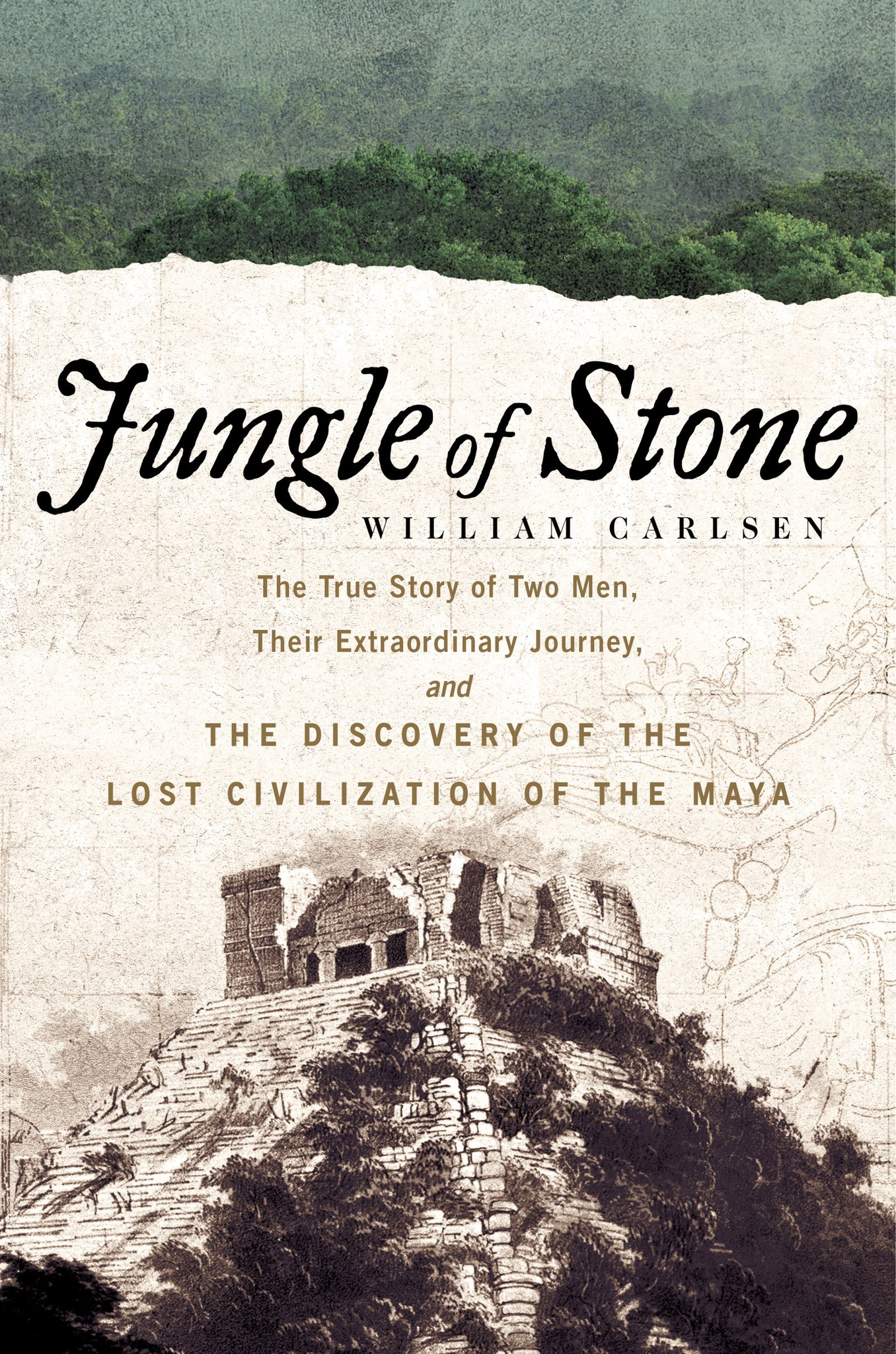
Jungle of Stone
Jungle of Stone: The True Story of Two Men, Their Extraordinary Journey, and the Discovery of the Lost Civilization of the Maya by William Carlsen, details the 1839 journey of two explorers, John Lloyd Stephens and Frederick Catherwood, who uncovered and documented what would come to be known as the ruins of the Maya civilization.
Though not widely known, the explorers were the first to full understand the importance of the Maya remains, and their findings completely changed the prevailing assumptions about the development of civilization.
In preparation of the book, Carlsen actually traced Stephens and Catherwood’s entire route himself, from ruin to ruin, in a 1985 Toyota Corolla — a 2,500 mile trek through the jungles of Guatemala, Honduras and Mexico
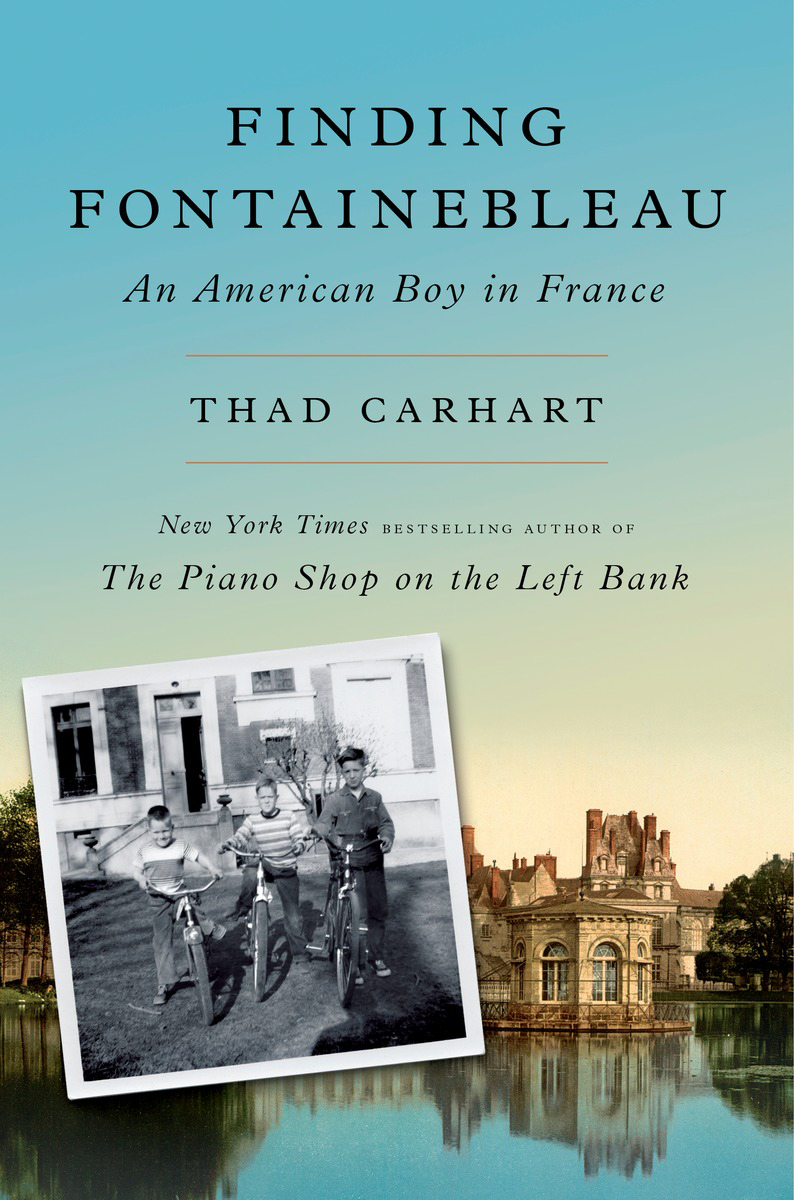
Finding Fontainebleau
Finding Fontainebleau: An American Boy in France, by Thad Carhart (New York Times bestselling author of The Piano Shop on the Left Bank), recounts the author’s upbringing in 1950’s France along with the history of the imposing Château of Fontainebleau over the centuries.
Carhar’s father, a NATO officer at the time, moved his family, including his mother and four siblings to the provincial town of Fontainebleau, France, home of the beautiful Château of Fontainebleau. The book intertwines stories of France’s post-war recovery with profiles of the monarchs who resided at Fontainebleau throughout the centuries and left their architectural stamp on the palace and its sizeable grounds.
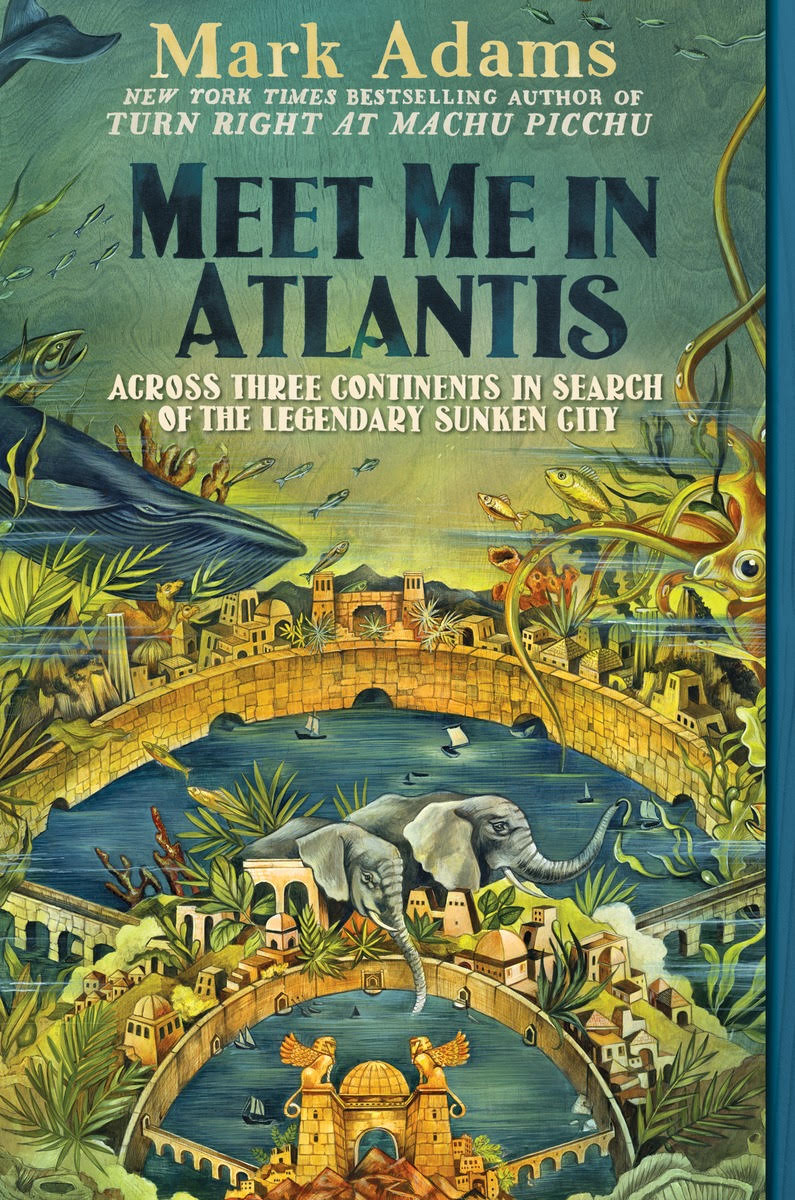
Meet Me in Atlantis
Meet Me in Atlantis: Across Three Continents in Search of the Legendary Sunken City finds author Mark Adams in search of the fabled lost city. In his exploration of the Atlantis myth, Adams launches an epic trip across three continents: idyllic Santorini islands, Morocco, Malta and Southern Spain’s ancient city of Cádiz.
For most of the population (including academia, journalists and Mark Adams himself), the lost city of Atlantis has always been about as real as UFOs and Big Foot. However, there are a lot of people that take Atlantis very seriously, and these amateur explorers became Mark’s travel companions.
In the end, Mark comes to his own surprising conclusions about whether Atlantis existed and if so, where its ruins lie. Told through the framework of his compelling and highly entertaining reporting and adventures, Meet Me in Atlantis is an engaging narrative with a truly memorable cast of characters.

It’s Only the Himalayas
It’s Only the Himalayas: And Other Tales of Miscalculation from an Overconfident Backpacker by one-time The Expeditioner contributor S. Bedford, is a laugh-out-loud memoir from a well-travelled nomad who hails from Toronto but lives by the notion that home is where her backpack is.
From South Africa (where she swam with sharks and ran from lions), to Nepal (where she met with her father to trek the Annapurnas in Chucks), to India (where she stumbled her way into an underwear commercial), and Thailand (where she was unintentionally involved in drugging an Englishman), Bedford’s chaotic year of backpacking was not exactly the Eat Pray Love journey she’d been expecting.
She didn’t find herself while traveling. She didn’t fall in love, or undergo a life-altering transformation, she isn’t enlightened, and she sure didn’t return home with the knowledge of what to do with her life. This is the realistic story of backpackers the world over, who are perfectly happy just to travel and to keep traveling.

/
 Matt Stabile is the Founder and Editor-in-Chief of The Expeditioner. The Expeditioner began in 2008 and is headquartered in New York City. You can read his writings, watch his travel videos or contact him at any time at TheExpeditioner.com.
Matt Stabile is the Founder and Editor-in-Chief of The Expeditioner. The Expeditioner began in 2008 and is headquartered in New York City. You can read his writings, watch his travel videos or contact him at any time at TheExpeditioner.com.
The post Five New Travel Books To Take On Your Next Vacation appeared first on The Expeditioner Travel Site.
]]>The post The 5 Ways to Read The Directions to Happiness by Bruce Northam appeared first on The Expeditioner Travel Site.
]]>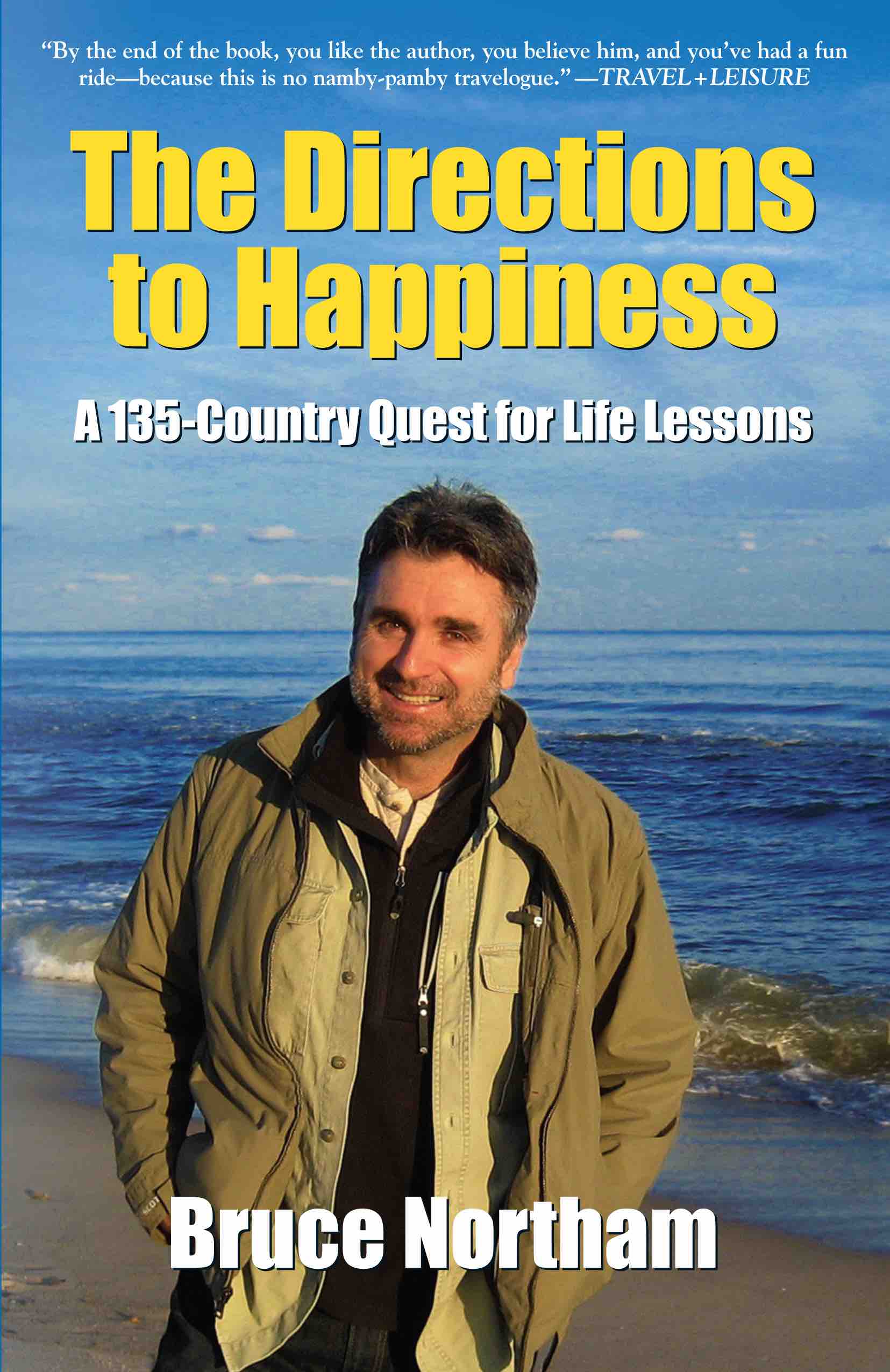
At the not-very-tender age of 35, travel writer Bruce Northam hitchhiked America from coast to coast one more time to bring awareness to the fact that it could still be done in spite of the negative P.R. the practice was receiving in the ’90s. By that time, Bruce had already been hitchhiking for two decades. His new book, The Directions to Happiness, is a lifetime of accumulated lessons given across his 30 years spent traveling in and out of 135 different countries. His “country math” was done reluctantly. As he told me, “Roaming the world should be a matter of art, not math.”
Having been able to count this New York-based author as a beer-drinking buddy of mine for the last two years, I knew I was in for some good storytelling when I loaded his latest book onto my Kindle. What I hadn’t anticipated was an integral guide that offered a thorough narrative and a compelling blueprint for finding purpose and meaning as a modern nomad.
The earnest travel wisdom coursing throughout the narrative is the sort you can’t get without spending a life on the road. Bruce is unafraid of alluding to his “vicier” days of youthful rambling, and he is unapologetic when he shares with his readers his fears the Internet culture might be fatally toxic to travel writing.
Bruce’s mischief-making followed him well past the age when most people in his age bracket begin dreaming about early retirement from the cubicles that could never hold him. He begins his narrative with tales from a childhood similar to the one led by Calvin from Calvin and Hobbes. He ends decades and 135 countries later, not owning a second home, but happy; still traveling, but settled enough to raise his daughter and to care for his aging parents.
The Directions to Happiness passes through a number of levels, from nodding wisdom to intoxicated hilarity. If you’ve been anywhere, odds are you’ll get to read about those places through Bruce’s unique lens.
Here are five ways in which the book makes a particularly compelling read.
1) The Directions of Happiness Should be Required Reading for Aspiring Travel Writers
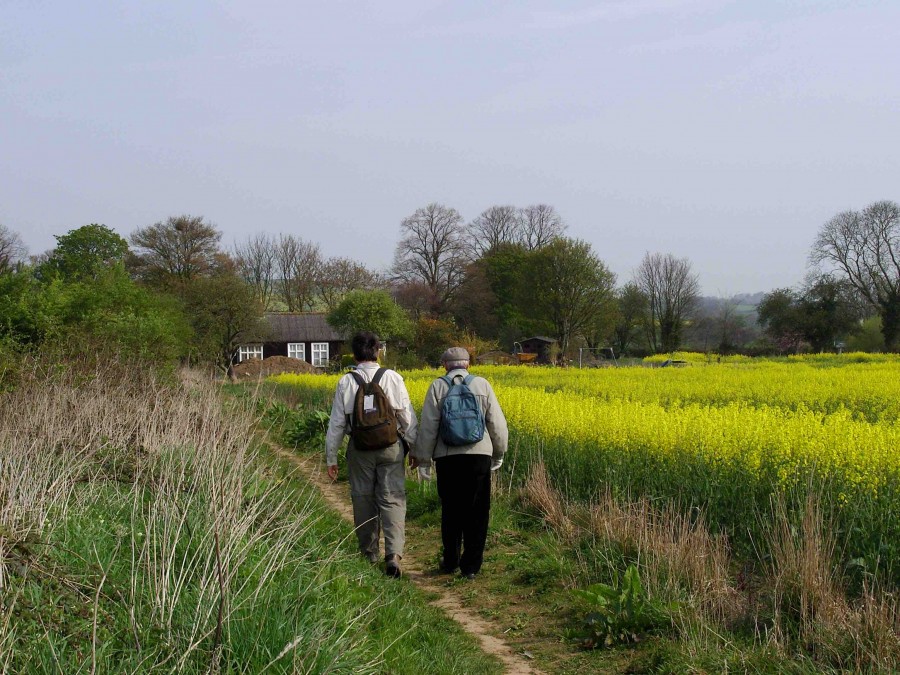
Bruce writes, “Nobody learns how to be a writer, nor a traveler. You make it happen.” Three years on, I’m still doing that, and at a certain point in the book, I stopped to take serious note. Bruce’s story is the story of a travel writer who made it. During the course of his three previously published books, he passed from varying states of financial stability, but he never gave up the fight — he was having too good a time.
“Writing about travel won’t win most fame or fortune, but it can send you and your pen to corners of the world that inspire alternative outlooks on life’s choices.” I read somewhere once that contentment is the measurement of having lived in a way that you’re proud of. The message of the book is clear: Bruce is certain he has made the right choice, and he knows he could never have found happiness by having lived any other way.
Bruce came to realize that a road well traveled and story well written were rewards of the highest rank. For me, this message is encouraging. Beyond encouragement, Bruce gives travel writers a lesson on how to be a travel writer while still providing an authentic voice. This is an important lesson today, especially given an Internet culture that seems to constantly be screaming: “Look at me!”
Throughout the book, he’s keenly aware how travel writing is changing, and he’s not thrilled that “[t]he explosion of travel content creators, especially on the web, forever changed the game. Some, who never muddy their shoes, are simply rewriting press releases where nobody ever seems to get robbed, conned, injured or laid.”
If you would like to live off travel and writing, and don’t want to contribute to international irresponsibility, this book offers an important viewpoint.
2) Read The Directions to Happiness as a Best Practices Guide to Cultural Travel
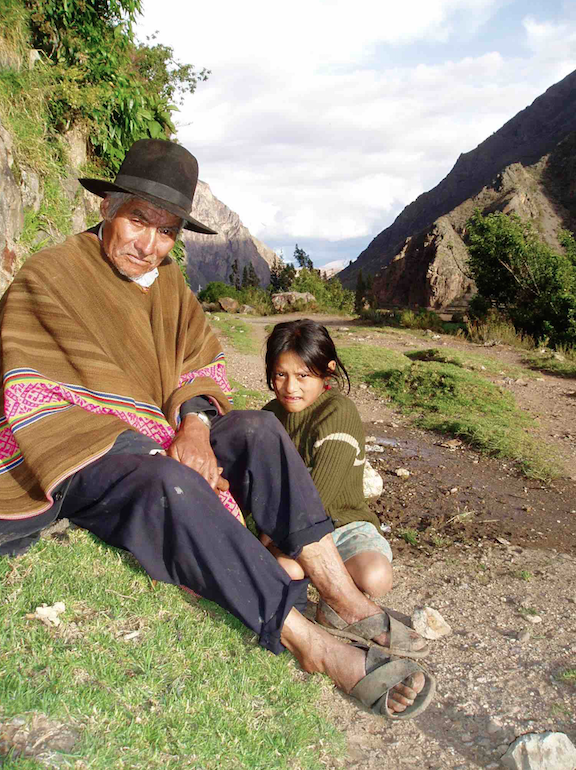
There are, in fact, right and wrong ways to travel. If you don’t think so, guess where you fall? Beyond rarely productive carbon footprint calculations, there’s a way to interact with locals where both the visitor and the visited come away better as a result of the meeting. Bruce interacts with locals as a grateful guest and offers the wisdom accumulated from these interactions.
“Don’t spend time, enjoy it,” a musician in Mozambique once told him.
“Your best teacher is your last mistake,” he learned from a Shaman in Peru.
Part of entering into another person’s world is fully leaving the world you’ve left. Bruce’s life on the road led him to see first-hand how traveling changed when Internet-connected devices started filling everyone’s packing list. This bums Bruce out. He’s not preachy, but he simply wants people to know how much better their trips will be if they “[u]nplug every now and then.”
3)Read The Directions to Happiness as a Guide on Volunteerism and Sustainable Travel
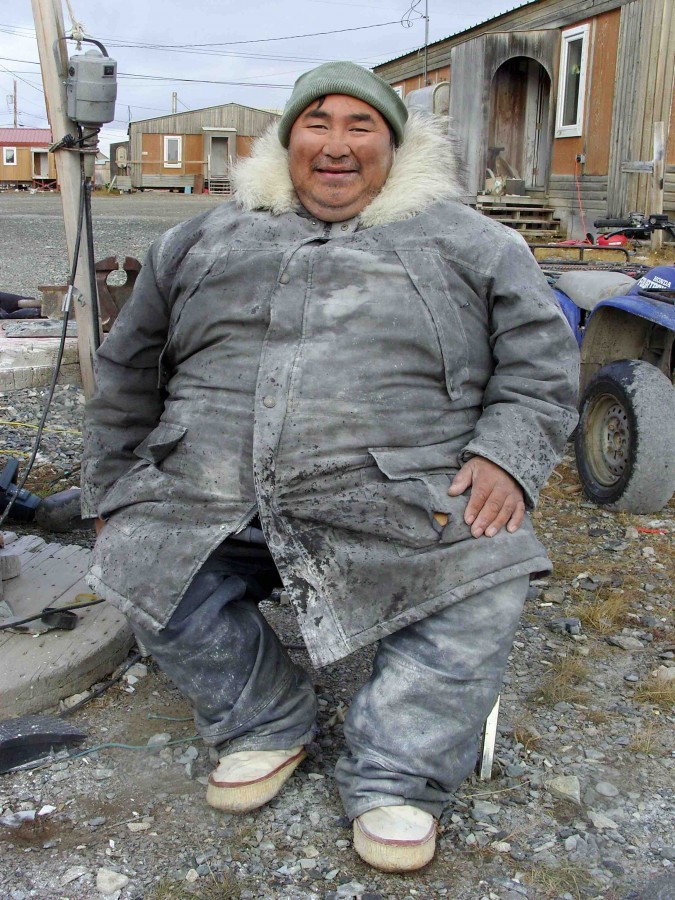
With the permission of the administration, Bruce has waltzed into many an elementary school around the world and commandeered a classroom to serve as the student’s guest teacher for a day. He has also spent time with orphanages and empowered NGOs around the world.
The lesson from this is that we don’t always need to work with a charity to make a meaningful difference, but neither do we need to shun charities. Living itself lends itself to countless human interactions, which we can steer towards positivity or negativity.
This mentality should be central to anyone dreaming of making a difference abroad. It leads to an important starting question: “Am I making a difference where I am right now with everyone I encounter?”
4) Read The Directions to Happiness As a Guide to Modern Nomadism

Living out of your suitcase isn’t always an endless adventure. Sometimes it’s hopelessly dirty underwear and troubling parasites. Considering the downsides, which include irrational fevers in lands where medicine hasn’t progressed much beyond the Middle Ages, the upsides must be truly marveling for so many people to consider a life on the road a dream life.
Living on the road teaches you there are quite a few of us out here, and while we all think our lives are awesome, we live them in defiantly different ways. When starting out, it’s important to consult those who made it out on the other side sane and not living in a cardboard box. Though I’d be the first to defend an insanity plea from Bruce, he’s certainly not living in a cardboard house beneath a bridge. Nomads, take notes.
5) Travel Philosophy as Found in The Directions to Happiness
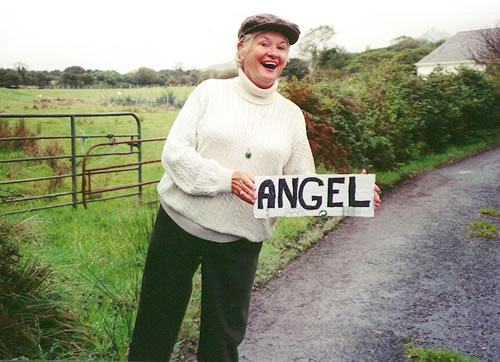
If you’ve ever read the complete works of any travel writer (or career writer for that matter), there comes a point in their career where their life philosophy progresses from fluid to established and somewhat certain. This is when they can really begin to impart their own travel philosophy to those still in their formative stage.
Bruce’s travel philosophy is a patient, non-judgmental one. He alludes to his wilder moments and reminds travelers to cherish each moment, place and person.
At one point, I stopped to reflect after reading the following passage: “Traveling makes people feel better not just because of the escapades to be had in new horizons, but also because we’re re-triggered to share our life story — and hear someone else’s.”
Living on the road, I take this fact for granted. Basically, everyday, I meet someone new, hear their 30-second elevator speech on who they are, and then I tell my own. I began to wonder: How has this impacted the people I’ve met?
*
In his epilogue, Bruce writes about how his biggest lesson compiling the book was the realization that a person living in one village for a lifetime often stumbles upon the same lofty wisdom that has taken civilizations centuries to realize.
“Someday we’re all going to realize we’re in this together,” Bruce writes. The road to get there may just be paved by those with worn soles because, “[b]roadminded, non-political solutions to the continuous warfare creeping into every shade of our planet won’t see the light until more travelers meet.”

 Luke Maguire Armstrong is the author of the intrepid travel collection The Nomad’s Nomad. When he’s not traveling or getting mauled by rodents in the jungle, he spends his time being rejected by girls in bars in Antigua, Guatemala. He broke his left ankle river dancing and his right ankle trying to impress the locals in Belize. Give Luke a guitar; he’ll sing you a song. Hand him a whiskey; he’ll tell you a tale. Give him both, and he’ll give you something to drink about.
Luke Maguire Armstrong is the author of the intrepid travel collection The Nomad’s Nomad. When he’s not traveling or getting mauled by rodents in the jungle, he spends his time being rejected by girls in bars in Antigua, Guatemala. He broke his left ankle river dancing and his right ankle trying to impress the locals in Belize. Give Luke a guitar; he’ll sing you a song. Hand him a whiskey; he’ll tell you a tale. Give him both, and he’ll give you something to drink about.
The post The 5 Ways to Read The Directions to Happiness by Bruce Northam appeared first on The Expeditioner Travel Site.
]]>The post Book Excerpt: ‘The Nomad’s Nomad’ By Luke Maguire Armstrong appeared first on The Expeditioner Travel Site.
]]>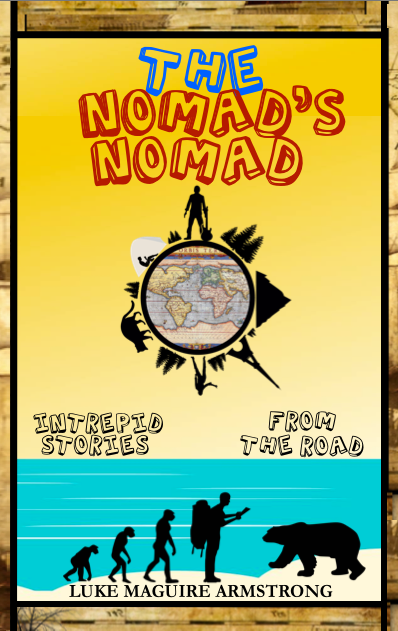
The following is an excerpt from The Nomad’s Nomad by Luke Maguire Armstrong
Uganda: Skin Testing Machine
If she was trying to get me to go away, she failed. But if her intent was to entice, if she wanted my money, if this was all a big elaborate scheme to draw me in with the need to know what soul-seizing secrets awaited me in the back room, then she had me right where she wanted me.
I was in Kampala, Uganda, running the typical traveler errands: buy padlock, eat lunch, put money on cell phone. A neon sign outside a health spa advertised, “Skin Testing Machine Here.” I walked in, wondering what it tested the skin for and was curious to know what the machine looked like.

The boutique was unsurprising: glass counters with mirrors behind them stocked with imported skin care products, the expensive kind that women running from wrinkles dump disposable income on to take their face on a journey through time.
“Hello,” I said to the Ugandan woman closest to me. She looked up from her cell phone, yawned, stared at me for a bit to acknowledge my greeting and then looked back down.
“Tell me about this skin testing machine,” I said with the enthusiasm of ice cream in the second grade.
“We have a skin testing machine,” she said without looking up.
“Can you tell me about it?” I asked, suddenly floored.
“No.”
“Can I see it?”
“No.”
“What does it test!?”
“Your skin.”
“For what?”
“I cannot tell you.”
“Why?”
“You have to get the test to know.”
“How much does a skin test cost?”
“20,000 Shillings (about $8).”
“Can I see it?”
“No.”
“Is it here?”
“Yes.”
“Where is it?”
“. . .”
“Can I see it?”
“No.”
This was very strange. My experiences in Uganda thus far had led me to conclude that Ugandans were as friendly as anyone on Sesame Street not living in a trashcan. Ugandans were oh-so-very friendly and most seemed eager to talk your ear off to tell you about everything (especially goats). They corner you, even if you’re tired, and will force a conversation out of you. But this woman and her Skin Testing Machine . . . if only she had given me a basic rundown of what it tested, what it looked like, why it warranted its own neon sign!
I left. I walked a block. The Mormons, perhaps the Scientologists, certainly the Jehovah’s Witnesses must be behind this. Surely the only thing that could save my skin would be accepting Jesus Christ as my personal lord and cosmologist. I turned to Cathy, my friend from the hostel. “I need to go back. I have to know.”
The woman nodded as I walked back in. “I’m prepared to give you 5,000 shillings just to see the Skin Testing Machine.”
“The only way to see it is to get the test for 20,000.”
“10,000 shillings just to see it.”
“No.”
“Really, half the price of the test just to take a peak?”
“No.”
$8 is not a lot of money. It’s worth paying when you suspect that neglecting to do so will lead to a lifetime of regret. Back in the U.S., looking out on a snow-covered world, I would look east and always wonder, “What did the Skin Testing Machine even look like? What were they hiding in the back room? Why was no one allowed to see it?”
“Fine,” I surrendered, “I will get the skin test.”
I coughed up the money — begrudgingly. The second woman, the one who had been silent, led me into the back room. “Can she come?,” I asked, pointing to my Canadian companion. No, of course she could not. No one rides the Skin Testing Machine for free!

The Skin Testing Machine was a large metal box with a tent that looked like an old photographer tent.
“Has anyone ever died in there?” I asked.
No one ever had.
“Look straight into the mirror,” she told me. “Some people are affected by the lights. If they pain you, you can close your eyes.”
What was in the mirror? Was this my soul I was looking at? The future? Those who have passed from this world?
No, it turned out just to be my face illuminated by black lights. The skin test took all of five minutes. I went behind the tent where I saw several mirrors, then black lights began illuminating the darkness. The woman went to the other side and I could see her eyes studying my face.
Afterwards, we sat at the table in the room and she wrote on a piece of official looking paper.
“Am I going to die?” I asked.
“No,” she said, making a promise I knew she would never be able to make good on in the long run. “But your skin — you have a sunburn.”
It was true. I was tired of hiding from the fact. Africa, why had you done this to me? Why had you condemned me to return to the New York winter looking tanned and awesome while everyone else looked pale and depressed?
“You also have oily skin,” she said. This was also true. My curse. Oily skin.
“But,” she said, “we can help this.” She then went on to tell me the only way to cure my sunburn and my oily skin would be to purchase 500,000 shillings in skin care products, or about the amount equal to the average monthly wage of the average Ugandan.

 Luke Maguire Armstrong is the author of the intrepid travel collection The Nomad’s Nomad. When he’s not traveling or getting mauled by rodents in the jungle, he spends his time being rejected by girls in bars in Antigua, Guatemala. He broke his left ankle river dancing and his right ankle trying to impress the locals in Belize. Give Luke a guitar; he’ll sing you a song. Hand him a whiskey; he’ll tell you a tale. Give him both, and he’ll give you something to drink about.
Luke Maguire Armstrong is the author of the intrepid travel collection The Nomad’s Nomad. When he’s not traveling or getting mauled by rodents in the jungle, he spends his time being rejected by girls in bars in Antigua, Guatemala. He broke his left ankle river dancing and his right ankle trying to impress the locals in Belize. Give Luke a guitar; he’ll sing you a song. Hand him a whiskey; he’ll tell you a tale. Give him both, and he’ll give you something to drink about.
The post Book Excerpt: ‘The Nomad’s Nomad’ By Luke Maguire Armstrong appeared first on The Expeditioner Travel Site.
]]>The post The 10 Best Travel Books Of The Last Two Decades appeared first on The Expeditioner Travel Site.
]]>
The joy of curling up with a good travel book is damn hard to beat. Part fiction, part memoir, the best travel books tell weird and wonderful stories and describe the intricate things that make a journey, or place, memorable. The initial excitement of a vessel leaving port or the joy of waking up to a brand-new city, they celebrate the act of exploration itself: poking around, asking questions, getting lost and into scrapes, making all the mistakes of a newcomer.
The best travel books should ignite a travel spark to pack your suitcase and stumble forward into some world experiences of your own. 12 years ago I picked up copies of Paul Theroux’s Dark Star Safari and Alex Garland’s The Beach and have been a restless wanderer ever since.
During the periods of vexing inertia when I’m not traveling, one of my most treasured activities is reading a travel book and pretending I’m right there with the narrator. I’ll transform into their best mate on a round-the-world road trip, a stowaway on the Trans-Siberian railroad, a (not-so handy) handy-woman helping to restore a Tuscan Villa or a Monastery volunteer in Nepal.
Over the years, some of the best travel books published in the last decade — like the ones below — have inspired me to travel far and wide and have almost always left me with an insatiable starvation for new cultures and experiences.
Their innate ability to fill the gaps in my knowledge of places that aren’t exactly on most government’s “Safe List” — like the Congo or Afghanistan — is a curiosity quencher that I’m continuously thankful for.
Disclaimer: What follows is a very subjective list of 10 of the best travel books of the last 20 years (in no particular order). I’m sure I’m missing a few, but I could only choose 10 so feel free to fight me in the comments section. And no, Eat Pray Love is not on this list.
I Wouldn’t Start From Here: The 21st Century and Where It All Went Wrong – Andrew Mueller (2008)
I Wouldn’t Start From Here is a curious tale of one man’s attempt to comically demystify the horrors and cultural complexities that plague our young world. Recounting his many crazy and death-defying experiences as a freelance correspondent for The Guardian and The Independent, Andrew Mueller’s fearless circumnavigation of some of the world’s most violent and politically shady places including Kosovo, Palestine, Libya, Sarajevo, Afghanistan and Iraq — as he grapples with “possibly the most maddening mystery of our time” — could have easily become a non-PC, jaded, samey “trouble tourism” recount.
Thankfully, the book is much more than that. With his self-effacing, good-humored cynicism extending beyond the war zones, he is able to reach deep inside each area to the people locked inside them. He slips easily between meetings with Hezbollah in Beirut, a Loyalist hitman-turned-surrealist painter in Belfast and Al Gore in Edinburgh. He is shot at in Gaza. He is imprisoned in Cameroon and he worries about the discomfort of U.S. soldiers in Iraq who look “as perplexed as people who’d togged up for a fancy dress party and gone to the wrong address.”
Under the Tuscan Sun – Frances Mayes (1996)
The “I just moved to [insert new city here] and this is why it’s so good” genre is completely and utterly saturated — this I know. We roll our eyes at the “unique” anecdotes and earth-shattering realizations of these authors — that is if they even get published these days.
We are just no longer interested in this sort of thing. We couldn’t be more bored of this genre if we tried. But, for some reason, I will never lose my childish enthusiasm for Frances Mayes’s memoir of an almost dream-like Tuscany. It’s my “go-to” book for when I want to feel all sunshine, lollypops and . . . Italian rainbows, and the aforementioned “been-there, done-that” mentality just doesn’t apply for me here. I think it’s partly because of it’s shameless la dolce vita attitude, but also because of its intelligent, engaging and empowering feminist tale (without being too pretentious). And besides, who wouldn’t want to randomly purchase a villa in Tuscany?
Dark Star Safari – Paul Theroux (2002)
Most 60-something travel writers are looking for gigs in Provence and Tuscany, but Theroux, the grandfather of travel writing, trekked overland from Cairo to Cape Town for this modern classic. Why? Because he’s awesome and he could. The wittily observant and endearingly irascible author takes readers the length of Africa by rattletrap bus, dugout canoe, cattle truck, armed convoy, ferry and train. In the course of his epic and enlightening journey, he endures danger, delay and dismaying circumstances. Gauging the state of affairs, he talks to Africans, aid workers, missionaries and tourists. What results is an insightful mediation on the history, politics and beauty of Africa and its people.
The Beach – Alex Garland (1996)
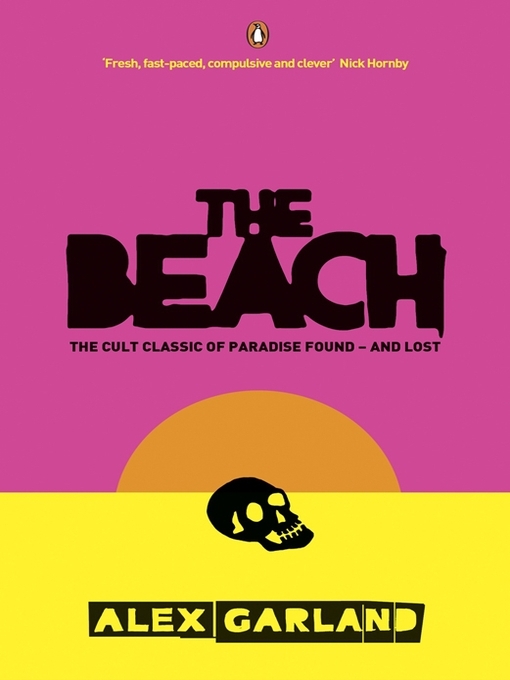
If only gap years in Thailand were really like this one. Well, up until the point where food poisoning and deadly violence on an otherwise “utopic community” ensue. Alex Garland’s story of a young traveler who finds “the perfect beach” by going off the tourist trail is inspiring for any would-be modern explorer, even if things do take a sinister turn by the end.
Despite his distrust of the younger Goa and Phuket-set with their technology obsession and general detachment from society, few writers have Garland’s eloquence when it comes to describing the simplest and purest of worldly pleasures — the beauty of a Thai sunset, the serene turquoise water of an uninhabited island — it’s impossible to not to want to book a trip to paradise after reading this book.
In A Sunburned Country – Bill Bryson (2000)
This is 100% Australiana told from one of the most revered travel authors of our time. In A Sunburnt Country is set Down Under — a place that doubles as a continent with the friendliest inhabitants, the hottest, driest weather and the most peculiar and lethal wildlife to be found on the planet.
Bryson takes his readers on a rollicking fun ride far beyond the beaten tourist path. His deliciously funny, fact-filled and adventurous prose describing the clean, safe cities, cold beer and constant sunshine Down Under makes me proud to call Australia home. And let’s not forget, Bryson’s account of a uniquely sporting people (read: sports mad), who excel at games ranging from cricket to Australian Rules football: “It is a wonder in such a vigorous and active society that there is anyone left to form an audience.”
The Sex Lives of Cannibals – J. Maarten Troost (2004)
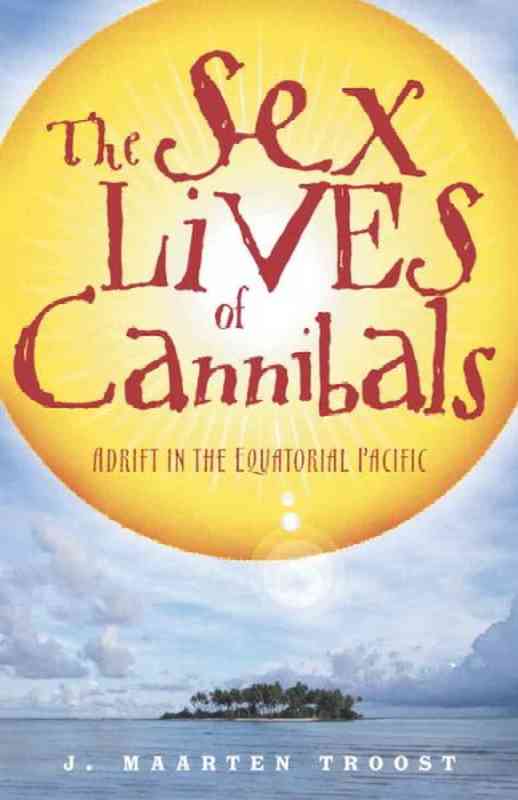
Fed up with being a directionless procrastinator and perpetual degree-swindler, Troost decides to follow his girlfriend to the vastly remote Island of Tarawa after she landed a job there. The Sex Lives of Cannibals tells the hilarious story of what happens when Troost discovers that Tarawa is not the island paradise he dreamed of.
Falling into one amusing misadventure after another, Troost struggles through relentless, stifling heat, a variety of deadly bacteria, polluted seas and toxic fish — all in a country where the only music to be heard for miles around is “La Macarena.” He and his stalwart girlfriend spend the next two years battling incompetent government officials, alarmingly large critters, erratic electricity and a paucity of food options (including the Great Beer Crisis). Troost’s hilarious travelogue will leave you thankful for the staples of Western civilization such as coffee, regular showers and tabloid news.
Into the Wild – John Krakauer (1996)
In April, 1992, a young man from a well-to-do family hitchhiked to Alaska and walked alone into the wilderness north of Mt. McKinley. His name was Christopher Johnson McCandless. He had given $25,000 in savings to charity, abandoned his car and most of his possessions, burned all the cash in his wallet, and invented a new life for himself.
Four months later, his decomposed body was found by a moose hunter. How McCandless came to die is the unforgettable story of Into the Wild. Krakauer is sympathetic to the spirit that led McCandless to set out for life off the grid. Much like Werner Herzog’s documentary Grizzly Man, this is a story that draws sharp lines between adventure and madness, shedding light on McCandless unflinching romanticism for being free to wallow in the raw, unfiltered experience of nature, which ironically cost him his life. It is for this reason that I enjoyed this story as much as it frustrated me. A great read.
Wild Coast: Travels on South America’s Untamed Edge – John Gimlette (2011)
Between the Orinoco and the Amazon lies a fabulous forested land, barely explored. Much of Guiana seldom sees sunlight, and new species are often tumbling out of the dark. Shunned by the conquistadors, it was left to others to carve into colonies. Guyana, Suriname and Guyane Française are what remain of their contest, and the 400 years of struggle that followed.
The 2012 Dolman Award-winning book by John Gimlette sets off along the coast, gathering up its astonishing story. His journey takes him deep into the jungle, from the hideouts of runaway slaves to penal colonies, outlandish forts, remote Amerindian villages, a “Little Paris” and a space port. He meets rebels, outlaws and sorcerers; follows the trail of a vicious Georgian revolt; and ponders a love affair that changed the face of slavery. Here too is Jonestown where, in 1978, over 900 Americans committed suicide. The last traces are almost gone now as the forest closes in. Beautiful, bizarre and occasionally brutal, this is one of the great forgotten corners of the earth: the Wild Coast.
Wrong About Japan – Peter Carey (2005)
The novelist Carey and his 12-year-old son travel to Japan in search of manga and anime culture, which the son adores and the father can’t quite understand. What follows is a nuanced and enchanting tour of Japanese culture (not dissimilar to Sophia Coppola’s Lost in Translation), as entered through its garish, brightly lit back door.
Guided, and at times judged, by an ineffably strange boy named Takashi, the Careys meet manga artists and anime directors, the meticulous impersonators called “visualists” and solitary, nerdish otaku. Throughout, the Booker Prize-winning novelist makes observations that are intriguing even when — as his hosts keep politely reminding him — they turn out to be wrong.
The trip doesn’t bring Carey (or indeed the reader) much enlightenment about the country (in fact, the book only serves as a reminder of the generational gaps and East/West divide), but that’s most of the fun, for even in a global age, it shows we can still find meaning in impenetrable and bewildering things when they are presented to us in an engaging way.
Headhunters on My Doorstep – J. Maarten Troost (2013)
Okay, I’ll admit it. I’m a bit of a J. Maarten Troost groupie. He is the David Sedaris of travel writing and I want to have his babies. So you can imagine my delight when he came out with a new novel — a memoir no less — last year. And it didn’t disappoint.
Part recount of “the-light-at-the-end-of-the-tunnel” of his alcohol addiction and part adventure story, Troost, upon completing a stint in rehab, decides to retrace the beaten path traveled by the author of Treasure Island (Robert Louis Stevenson) through the Marquesas, the Tuamotus, Tahiti, the Gilberts and Samoa. Bringing his signature wit and penchant for misadventure, Troost confronts his newfound sobriety in the only way he knows how: getting lost in the real world.
The Prince of Marshes: And Other Occupational Hazards Of Iraq – Rory Stewart (2006)
In August 2003, at the age of 30, Rory Stewart took a taxi from Jordan to Baghdad. A Farsi-speaking British diplomat, he was soon appointed deputy governor of Amarah and then Nasiriyah provinces in the remote, impoverished marsh regions of southern Iraq. He spent the next 11 months negotiating hostage releases, holding elections and splicing together some semblance of an infrastructure for a population of millions teetering on the brink of civil war.
The Prince of the Marshes tells the story of Stewart’s year. As a participant, he takes us inside the occupation and beyond the Green Zone, introducing us to a colorful cast of Iraqis and revealing the complexity and fragility of a society we struggle to understand. Darting between funny and harrowing, moving and incisive, this book amounts to a unique portrait of heroism and the tragedy that intervention inevitably courts in the modern age.

[Hand Holding Book via via shutterstock]
By Stefanie Acworth /
 Call her a nomad, but travel keeps Stefanie Acworth sane. After living and working in London and New York (and everywhere in between), she still calls Australia home (or so the QANTAS commercial says). When she’s not gallivanting around the globe and penning her adventures, you can find her making dreamcatchers in Byron Bay, copywriting for some top Australian brands or hosting the next pub trivia night at her local. Follow her travels on her blog, AModernWayfarer.com.
Call her a nomad, but travel keeps Stefanie Acworth sane. After living and working in London and New York (and everywhere in between), she still calls Australia home (or so the QANTAS commercial says). When she’s not gallivanting around the globe and penning her adventures, you can find her making dreamcatchers in Byron Bay, copywriting for some top Australian brands or hosting the next pub trivia night at her local. Follow her travels on her blog, AModernWayfarer.com.
The post The 10 Best Travel Books Of The Last Two Decades appeared first on The Expeditioner Travel Site.
]]>The post 6 Books You Must Read Before Going To France appeared first on The Expeditioner Travel Site.
]]>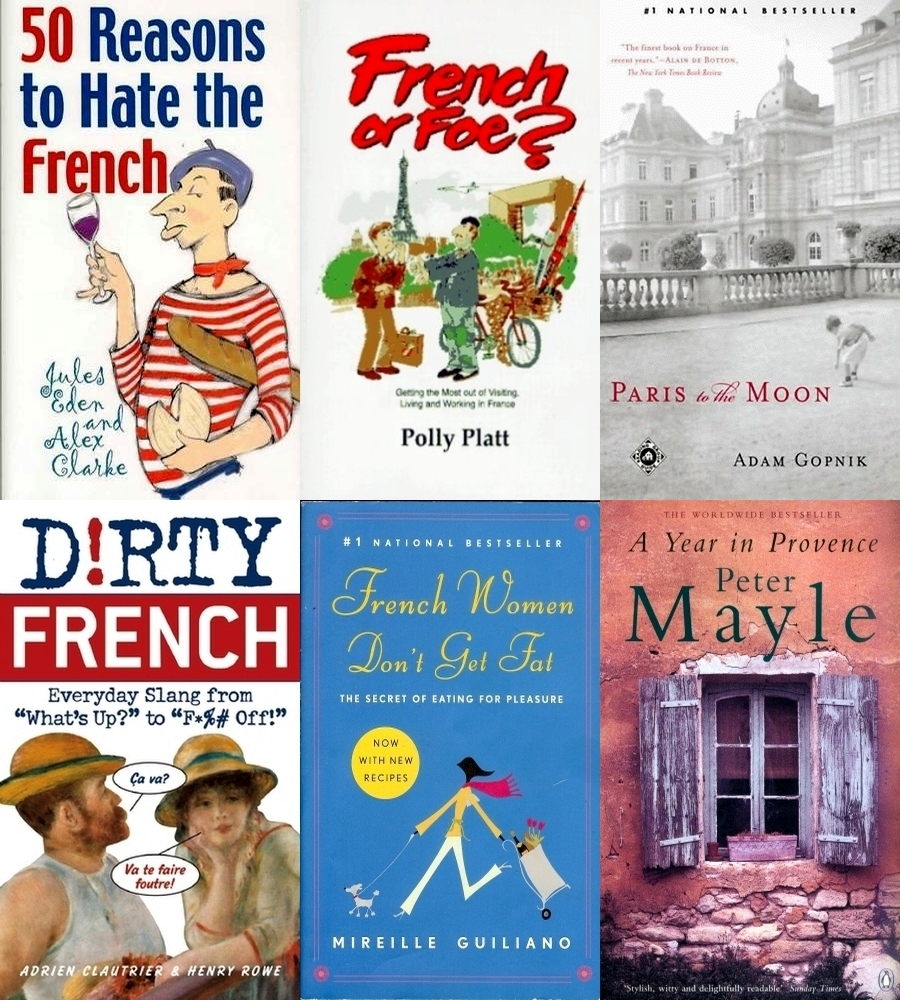
The stereotype of the French is that they are stinky, rude and have a predilection for bad comedy, but they are also elegant, thin and have a predilection for fine art and good literature.
The French are nothing if not an enigma — a study in paradoxes. How can one wear the latest Balmain creation yet go out sans deodorant? Truth be told, the French are far more complicated than the sum of their stereotypes.
When I studied abroad in Paris I learned it’s not that they are smelly, it’s that Americans are obsessed with hygiene. The French aren’t rude, we’re just too smiley. See? It’s all about perception. Having said that, whether you plan on living, studying or just visiting France, you might want to study up on what makes the French tick. To help you out, try reading one or all of the following books. You know, so you don’t come across as a boorish American or anything like that.

1) 50 Reasons to Hate the French by Jules Eden and Alex Clarke
Just in case you’re not sure if you love or hate the French, Jules Eden and Alex Clarke give you 50 hilarious reasons to detest them. Using history to illustrate many of their points, the duo delve into the literature, art and politics of France. From Depardieu to the lack of reverence for time, you’ll find yourself disliking those frog eaters, until you realize you still want to see the Eiffel Tower and croissants taste pretty dame good.
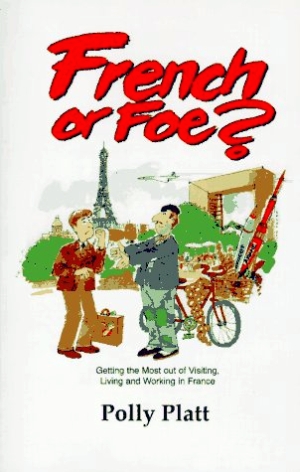
2) French or Foe?: Getting the Most Out of Visiting, Living and Working in France by Polly Platt
When you’re in France, there may be many times when you wonder whether someone is being purposely rude to you or whether they are just being French. Polly Platt tackles the stereotype of the “rude Frenchmen” head on by explaining the differences in our cultural attitudes and mannerisms to make your stay in France oh-so-pleasant.
So when the waiter is ignoring you during your next meal, you’ll now know that it’s not because he is secretly plotting against Americans, but because he wants you to take your time and enjoy your meal.
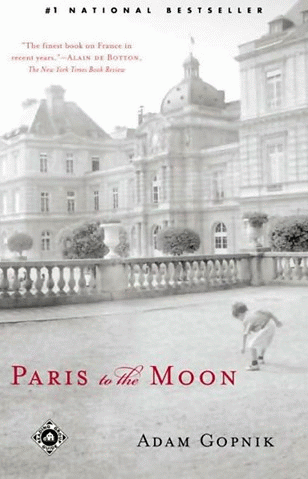
3) Paris to the Moon by Adam Gopnik
If you’ve ever wondered why there is no French version of Barney the purple dinosaur or why Café de Flore is the height of chic while Les Deux Magots is the equivalent of a public toilet, this is the book you need to read.
With a splash of humor, a dollop of personal anecdotes and a whole lot of love for the French, Adam Gopnik’s essays are an intellectual take on the most simple of French habits, including their obsession with striking. You may not approve when the métro you need to get to the Champs-Elysees is no longer running, but at least you’ll understand. Sort of.

4) Dirty French: Everyday Slang from “What’s Up?” to “F*%# Off!” (Dirty Everyday Slang by Adrian Clautrier
In light of all this newfound understanding, you may find yourself making friends or wanting to flirt it up with a Frenchie. Throwing out some slang will let the other party know you’re hip to French culture. Gems like “I feel like partying (Je suis d’humeur a faire la tete), or “Damn girl your body is banging” (Oh cousine, chaud devant) will get you in the French fray in no time.
Or in spite of all this fabulous understanding you may acquire, you may still need to tell someone in no uncertain times to mind their own business. Since you’re in France, it’s only fitting you should be able to potentially curse someone out in their own language. This way they will actually understand you and you can still remain unfailingly polite for speaking in the local language.
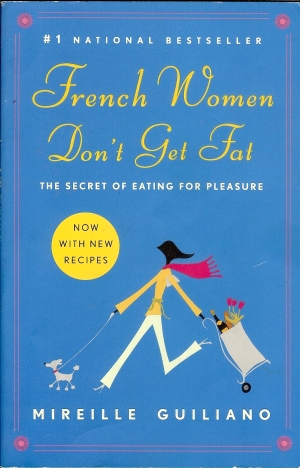
5) French Women Don’t get Fat by Mireille Guilano
If a year studying abroad and living with a French family taught me anything, it’s that the French love food like Americans love football and artificial sweetener. The reason most French women (and men) don’t get fat is because they don’t stuff their faces 24/7. And when they do, it’s not with a bag of BBQ potato chips.
The French don’t just eat — they savor. They dine. A meal is a three-hour affair that just happens to accompany a rousing debate about politics or which boulangerie has the best bread. Mireille Guilano goes into all of this with great detail, allowing even the junkiest of eaters to revamp their habits. Read this and you’ll understand how and why the French women can eat chocolate all the time and still look like Brigitte Bardot.
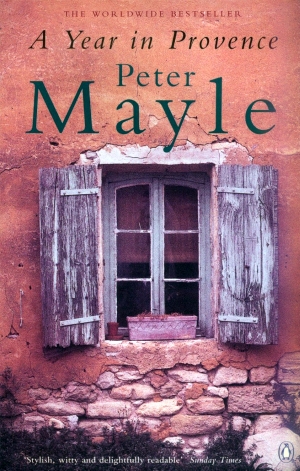
6) A Year in Provence by Peter Mayle
Who hasn’t thought of leaving it all behind and running off to France? I certainly have. Oh wait, I did do that. Armed with dreamy visions of fresh brie cheese, gothic cathedrals and men with French accents sweeping me off my feet, I said no to another year of frat parties and Natty Light for the beauty of France.
Then reality hit. In my case it was in the form of dog poo on the sidewalks. In the case of Peter Mayle, it was namely in the form of a freezing winter, nosy neighbors and French bureaucracy. But through it all, Mayle tells the story with a light-hearted affection for his adopted country capturing the more comical aspects of everyday French life. At the end, you can’t help but love the French.
By Rachel Khona

About the Author
 Rachel has served as contributing editor for Vaga and has written for Cosmopolitan, Inked and Ask Men. She is currently working on a memoir about being raised by a conservative Indian family, swindling European cab drivers and scaling glaciers. Find out more about Rachel at RachelKhona.com or follow her on Twitter at @RachelKhona.
Rachel has served as contributing editor for Vaga and has written for Cosmopolitan, Inked and Ask Men. She is currently working on a memoir about being raised by a conservative Indian family, swindling European cab drivers and scaling glaciers. Find out more about Rachel at RachelKhona.com or follow her on Twitter at @RachelKhona.
The post 6 Books You Must Read Before Going To France appeared first on The Expeditioner Travel Site.
]]>The post If Guidebooks Were High School Students, DK Travel Guides Would Be Captain Of The Cheerleading Squad appeared first on The Expeditioner Travel Site.
]]>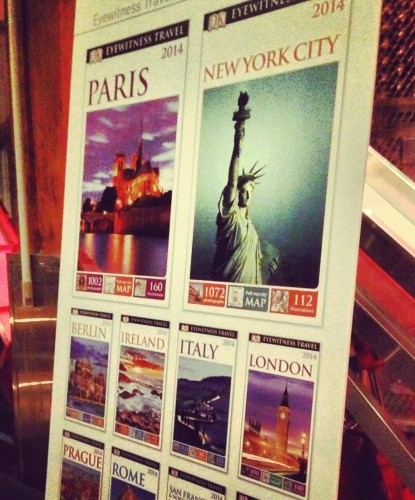
If guidebooks were all students at a high school, this is who each of them would be:
Frommer’s = The popular Lacrosse Player
Well liked by almost everyone, reliable, always on time for class, and doesn’t stir up too much controversy.
Lonely Planet = The Stoner
Hangs out behind school smoking cigarettes between classes, friends with the other kids into good music, and spends most of their time making fun of the jocks.
Rick Steves = President of the Chess Club (and member of the A/V Club, Math Club, and Online Gaming Society)
Is fond of wearing khaki pants no matter the situation, will start lecturing you on the minutiae of a particular topic if you stop to make conversation, and is often bullied by every other group in the school.
DK Eyewitness Travel = Captain of the Cheerleader Squad
Pretty, good looking and sometimes intimidating to approach, proportioned in all the right places, and is often home alone on Friday night because everyone else is afraid to ask her out.

And while we’re on the topic of guidebooks, last night I attended the unveiling of the new round of DK Eyewitness Travel Guides here in New York, and unlike in high school, I had no problem going up to them and putting my paws all over their pretty little pages (okay, I’m officially done with the vague metaphors).
This year marks the series’ 20th anniversary, and to honor the occasion, they are releasing updated versions of their most popular titles, including Paris, New York, London, Rome, Prague and Ireland. As always, each book is packed full of color photographs, informative graphics of building cutaways, and well marked maps with each street clearly labeled (Lonely Planet, are you paying attention to that last part?). They also unveiled their newest title, Russia, ahead of the 2014 Winter Olympics in Sochi.
Despite what you may have heard, print is far from dead, at least in the guidebook world. As DK’s Travel Publishing Director Clare Currie notes, “Our current reality is that more people buy guides in print than they do in digital equivalents . . . and [we] continue to respond to the market and deliver great content in the format demanded by our readers. We’ve listened to our users and also looked at how we travel ourselves, and what we want before, during, and after we hit the road.”

Now to be completely fair and honest, I have always been a Lonely Planet guy myself, most likely because of the type of travel I do, as well as the certain sense of familiarity I have with their format at this point. That being said, having a little time to thumb through the Prague and Berlin titles this morning, I have to say that they have got LP smoked on detailed and visual information about specific city and country landmarks.
Where other guides have a small blurb about a particular cathedral, DK is likely to have half a page detailing its history, accompanied by a color graphic with information and stats interspersed throughout the image. However, given their glossy pages and high-quality stock paper, the guides are going to be heavier than your other guides (I don’t think my back will ever forgive me for lugging around five of their guides when I traveled Western Europe after college), but what you lose out on in weight, you make up for in reading accessibility and visual flair.
I did obtain a little insider information about the evolution of the guides while I was there, as well as through my own thorough research (five minutes ago). If you weren’t familiar, DK Eyewitness Travel Guides and Rough Guides are both owned by the same corporate overlord, Pearson Plc, which distributes their book titles through their consumer publishing unit, Penguin Group. (Fun fact: DK was independent up until 1999 when it published 18 million copies of Star Wars books ahead of the release of Episode I: The Phantom Menace. 10 million copies went unsold, leaving them in dire financial straits, and thus leading them into the arms of Pearson. So in other words, blame Jar Jar Binks for their past financial problems.)
Given that the two titles are under the same umbrella, there has logically been some crossover in styles, hence DK’s recent streamlining of content, emphasis on various itineraries and inclusion of more restaurant options. This has also opened up a whole world of new, talented writers who are able to provide up-to-date, accurate information.
So to provide a summary, the cheerleader has learned to talk the Stoner, hang out with the Lacrosse team players on the weekend, and even say “hi” to the Chess Club President while walking down the hall. In other words: all is good at Guide Book High.
*
For more information and to take a sneak peek inside their most popular title, visit DK.com.
By Matt Stabile

About the Author
 Matt Stabile is the Founder and Editor-in-Chief of The Expeditioner. The Expeditioner began in 2008 and is headquartered in New York City. You can read his writings, watch his travel videos or contact him at any time at TheExpeditioner.com. (@TheExpeditioner)
Matt Stabile is the Founder and Editor-in-Chief of The Expeditioner. The Expeditioner began in 2008 and is headquartered in New York City. You can read his writings, watch his travel videos or contact him at any time at TheExpeditioner.com. (@TheExpeditioner)
The post If Guidebooks Were High School Students, DK Travel Guides Would Be Captain Of The Cheerleading Squad appeared first on The Expeditioner Travel Site.
]]>The post Here’s Your Chance To Get Adam Shepard’s New Travel Book appeared first on The Expeditioner Travel Site.
]]>Author and speaker Adam Shepard, whose first book, Scratch Beginnings, led to appearances on the Today Show, CNN, Fox News and NPR, as well as mentions in the The New York Times, the New York Post, The Atlantic, and The Christian Science Monitor, saved up some money from that experience — $19,420.68 to be exact — and traveled the world on that amount alone from 2011 to late 2012.
His 17-country trip ultimately became the basis of his newest book, One Year Lived, which is available now for sale.
So can everybody take a year to get missing? Adam in his own words: “Maybe, maybe not,” he says, “though that’s not really the point. I’m just concerned that some of us are too set on embracing certainty. We want life to be cushy and regimented, but that’s not how we can create a lasting impact on our lives or the lives around us. It’s fascinating the perspective we can gain when we step out of our bubbles of comfort, even just a little bit.”

To read more about Adam and to read an excerpt from the book, visit OneYearLived.com.
By Matt Stabile

ABOUT THE AUTHOR
 Matt Stabile is the Founder and Editor-in-Chief of The Expeditioner. The Expeditioner began in 2008 and is headquartered in New York City. You can read his writings, watch his travel videos or contact him at any time at TheExpeditioner.com. (@TheExpeditioner)
Matt Stabile is the Founder and Editor-in-Chief of The Expeditioner. The Expeditioner began in 2008 and is headquartered in New York City. You can read his writings, watch his travel videos or contact him at any time at TheExpeditioner.com. (@TheExpeditioner)
The post Here’s Your Chance To Get Adam Shepard’s New Travel Book appeared first on The Expeditioner Travel Site.
]]>The post In Defense Of Books appeared first on The Expeditioner Travel Site.
]]>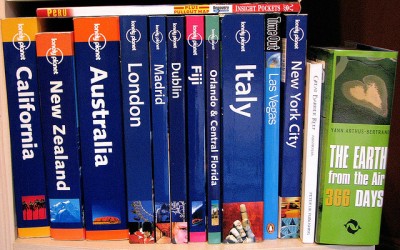
Let’s all give a collective sigh of appreciation for the pure unadulterated joy of books. Let’s toast their smooth, creamy pages, their musty smell, their meticulously designed covers. Recall the weight of a hefty book in your hand— it’s much better than the overly bright, soul-sucking computer screen you’re staring at right now.
The best kind of book is the one where putting it down in order to accomplish such pleasantries like eating or sleeping or using the facilities would be akin to the apocalypse. (I confess, when each Harry Potter book debuted my family wouldn’t see me for three days until I emerged blinking in the sunlight, mumbling incoherently about Muggles, Diagon Alley, and the Sorting Hat.)
Books are even more beautiful to read while traveling. They provide you with a nuanced understanding of the place you are visiting. Regardless if it’s fact or fiction, history or travel-centric, a book offers a parallel narrative to your experiences. This narrative widens your perception of a city or country, allowing you to dive deeper into its belly, and (forgive me for the analogy), pry open its ragged shell to find the glowing pearl hidden within.
Expectedly, Smithsonian understands the power of reading when traveling, as evidenced by their recent article outlining great books and where to read them. I agree with most of the author’s suggestions, such as Homer’s The Odyssey in Greece and Bryson’s Notes From a Small Island in England. The article also recommends travelers read Krakaur’s Into the Wild while visiting Alaska — which, while fitting, has potential to scare you from ever venturing into the wilderness alone again.
When I road-tripped through the American Southwest several years ago, I recall reading Barbara Kingsolver’s Animal Dreams, an Arizona-based novel filled with cacti and adobe buildings, Native American themes and the natural landscape of red-hued mountains. It was a moving and memorable way to journey through the sometimes stark, sometimes breathtaking roads of Texas, New Mexico, Arizona and Colorado.
Simply put, books are transcendent. They change us even when we aren’t traveling, and their contents make us grow as human beings. We are better people because books exist.
So what should you do?
Rediscover your affection for books. Go to a bookstore. Borrow one from a friend. List your top travel book recommendations in the comments below (don’t everyone rush and recommend The Expeditioner’s Guide To The World at once.) And for goodness sake, if you plan on reading Fifty Shades of Grey, for everyone’s comfort, download it to your Kindle.

About the Author
 Jenna Blumenfeld, (Jenna Ogden Blumenfeld when she’s in really big trouble) hails from the wee state of Connecticut. Although her childhood dream of becoming a bug doctor — with a specialization in ladybugs — has gone unfulfilled, she is content writing about travel, cuisine and culture. A vegetarian, she currently resides in the food hub of Boulder, Colorado. Read more of her food-centric writing at NewHope360.com.
Jenna Blumenfeld, (Jenna Ogden Blumenfeld when she’s in really big trouble) hails from the wee state of Connecticut. Although her childhood dream of becoming a bug doctor — with a specialization in ladybugs — has gone unfulfilled, she is content writing about travel, cuisine and culture. A vegetarian, she currently resides in the food hub of Boulder, Colorado. Read more of her food-centric writing at NewHope360.com.
The post In Defense Of Books appeared first on The Expeditioner Travel Site.
]]>The post National Park Nomad: Q & A With Guidebook Author Michael Joseph Oswald appeared first on The Expeditioner Travel Site.
]]>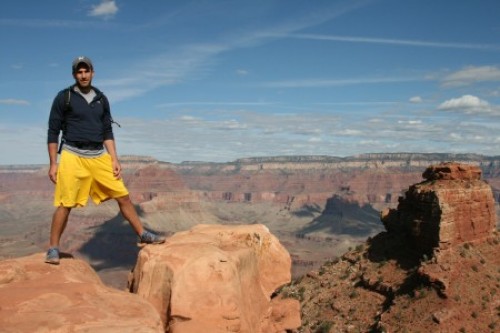
Sometimes we get caught up planning out our next epic adventure to exotic lands and far-off cultures, driven, in part, by eating extraordinary cuisine, meeting those that call the corners of earth home and seeing sites one has only heard about. This idea of exploration reaches out its age-old fingers to pull in even the most seasoned travelers. It is less often, however, that our very own backyard becomes the vision of these dreams.
On March 1, 1872, U.S. president Ulysses S. Grant signed the Act of Dedication, turning the boiling mud, deep canyons and explosive geysers of Wyoming into the world’s first National Park — a little place you might know as Yellowstone. Since then, America’s National Park System has blossomed to include 58 unique and equally awe-inspiring parks and has been the blueprint for preserving lands the world over.
There is a very reliable statistic floating around somewhere that says something like 438% of the visitors to these parks venture less than 4 inches from the metal wombs they arrived in. (Okay, maybe not, but you get what I mean.) Thus, they only scratch the surface of what these irreplaceable treasures offer: mountaineering North America’s tallest peak, shooting the rapids in the “grandest” of red-rocked canyons or simply gaining inspiration on banks of a water-filled volcanic caldera.
Recently, I opened my wobbly curbside mailbox. Ivory doves emerged as a lone spear of sunshine illuminated the title of the book I now hold. In my hands was the key to comprehensive engagement with the entire National Park System: Your Guide to the National Parks: The complete guide to all 58 National Parks. I haven’t put it down since.
I have yet to read a more comprehensive and detailed compilation done on the National Parks. Perhaps there are too many parks, with too much to do, and too much to say about each. Mind you, there needs to be a pretty high degree of awesomeness for a place to rise into the National Park ranks. Maybe the void of guides to all the parks is due to a lack of people brave enough to dive into a project of this magnitude. The speculation can end thanks to Michael J. Oswald.
I was lucky enough to track down Michael before leaving on his cross-country book tour from the driver’s seat of a (recently) broken-down school bus to ask him a few questions. He shared his insights on making the transition from traveler to travel writer, where everyone should eat lunch and his take on Snuggies.
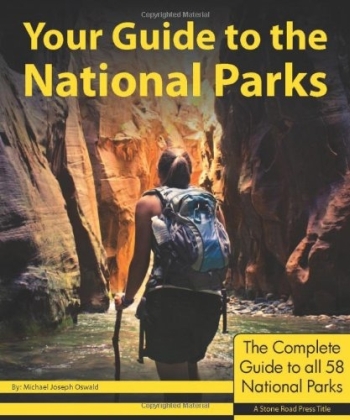
The Expeditioner: This is your first guide book. What possessed you to create a 704-page publication on every one of the National Parks? You didn’t want to tackle anything a little less, um, massive?
MJO: A magician never reveals his tricks. The doves are my little secret, but I’m happy to reveal all the secrets of Your Guide to the National Parks (YGNP). The pithy response is that brevity isn’t exactly my thing. With that said, only a hypocrite would leave it at that.
The real genesis of YGNP came from a long line of exceptionally poor, or at the very least, rash decisions. In the span of about a year, I left my job as an electrical engineer in search of a more emotionally rewarding lifestyle. So long cubicle with Western-style saloon doors, 9-5, paychecks, benefits and pension plan.
I set off to explore the parks in February 2009. I ventured into the park system once before, which stirred something inside me that has always existed. I began to think there could be something more significant between the park system and me beyond that two-week fling. Sleepless nights. Forgetting to eat. Six-hour phone calls repeating, “I love you more. No, I love YOU more.” All the signs were there: solitude, majesty, peace and adventure. It struck a chord with my soul. I felt at home. I fell in love.
Naturally, I was compelled to share these feelings with others. Forty-eight parks, 50,000 miles in my trusty VW, countless hours in front of a computer screen and you’ve got YGNP. It’s roughly four years of my life in 704 pages.
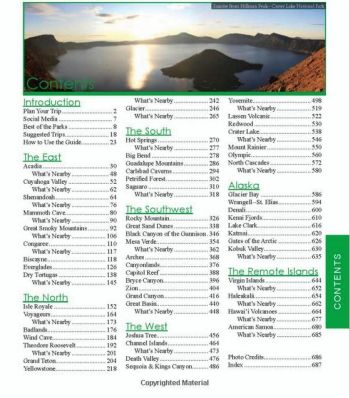
The Expeditioner: For those fellow travelers attempting to follow their own dreams of getting published, can you take us through the process? From concept to publication; traveler to guidebook publisher?
MJO: I’ve learned a ton during this project. The concept is simple. I was very familiar with many of the already published guides on the parks, but each left me wanting more — none seemed to quench my curiosity nor are truly comprehensive. In fact, they typically aren’t particularly good beyond the motor tourist type. But, when I picked up James Kaiser’s Acadia, The Complete Guide, I found my inspiration.
Research was the fun part. My car (50,000+ miles), bikes (thousands of miles), kayak (hundreds of miles) and legs (more than 1,000 miles) received extensive use. On average, I’d say I spent about one week in each of the 48 parks I visited (the other 10 were bypassed due to small visitation rates, high cost to visit, or a combination of both), and some parks received much longer stays than others.
Reality dictates that Congaree National Park in South Carolina doesn’t require as much time as, say, Grand Canyon. Those larger parks like Yosemite, Yellowstone and Grand Canyon, I visited during each season to understand the differences in visitation and activities available throughout the year. It was a long, fairly well thought-out process, and I loved every minute of it.
After I wrote and designed the first section on Acadia National Park, I stuffed the draft in my panniers and set off on a 10-day bicycle and backpacking trip around Lake Michigan and Isle Royale National Park. I found myself analyzing the template each night in my tent. By the time I was heading back to my hometown of Manitowoc, Wisconsin (sailing across Lake Michigan on the S.S. Badger car ferry), I had my design locked in and was ready to move forward with the rest of the parks. After something ridiculous like 10,000 hours in front of my computer, I took my hands off the keyboard and mouse and called it a book.
Then I tackled the printing and distribution side — a bit of leg work. The printing turned out great. However, distribution was a harder nut to crack. There needs to be a significant amount of trust between the publisher and the distribution. All the large independent distributors want publishing houses that produce at least five books each year, and that’s simply not me. At the end of a fairly extensive search, I signed a two-year contract with Cardinal Publisher’s Group in Indianapolis — no small feat as I have a terrible time signing a cell phone contract.
The last step was to begin implementing the marketing portion of my business plan. Which, well, here we are.
The Expeditioner: And doing pretty well at it, too. Now that you’re officially an author, what are you most proud of? What are some reactions you’ve see about the book?
MJO: The initial reception of my work almost always takes one of two forms of disbelief. I either get, “WOW!” or “Oh my God, this is incredible!”, to the other side of the spectrum with a comment such as, “There’s no way you did this on your own.” Both are equally flattering. One of the most satisfying reactions came during pre-press. Many of the pressmen and cover folks wanted to page through it long before ink touched paper. That was a pretty good feeling.
I have to say that I felt the most pride when I first saw my work on a bookshelf. However, I think the pinnacle of proudness will be when I see dog-eared copies of YGNP start showing up on peoples’ dashboards and coffee tables.
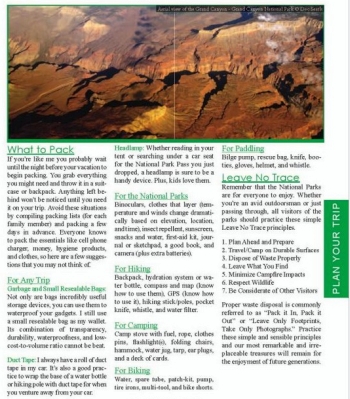
The Expeditioner: That won’t take long. Actually, there’s already a dog-eared copy sitting on my coffee table. When I paged through the book, one of the more impressive aspects is not just the breadth of information, but its depth. You’ve got top sights, sample itineraries, history, weather trends, maps, fun facts — it’s pretty incredible. What is your reaction to those that say, “There’s no way you did this on your own!”?
MJO: Copy and pasting! Ha! No, simply put, it was a lot of work. I spent nearly two years sleeping mostly in my car and tent, traveling from park-to-park, scribbling my thoughts into journals and collecting testimonials from park rangers and tourists. After the “research” phase, I took a seat at my computer and barely left that chair for the next two years.
Looking back at it now, it sounds completely insane. I literally spent all day, every day for two years sitting at my computer plodding along on this incredibly ambitious project. I think I just convinced myself I really am nuts.
The Expeditioner: I have to ask about the backward spine? Did you plan that? F-up? Marketing genius?
MJO: You don’t have to ask. I’d like to think of it as a Steve Jobs-ian marketing move on my part. Kids across the globe aren’t going to feel cool unless they’re toting a book with spine text that’s 180-degrees from the norm! So, when that catches on, you’ll have me to thank.
My goal was to destroy all the unflattering stereotypes surrounding work of self-published authors. I still think that goal was reached, but it’s disappointing to screw up something as obviously visible as the spine text. The fact of the matter is that it’s one of those oversights and a major bummer. (My editor, Derek, took it harder than I did, even flipping the book upside-down on his bookshelf so it looked right.) The good thing is that it doesn’t ruin the experience at all. Let’s just laugh and say it makes the book stand out on bookshelves a little bit, but it will get fixed for the next print run.

The Expeditioner: The Stone Road Press marketing strategy: flip the spine — brilliant. Let’s get to some top spots. Top 5 places you’ve eaten lunch and top 5 places you’ve slept?
MJO:
1) I love any lunch in the backcountry, but they’re mostly uneventful and alone. So any backcountry spot would be my #1. Beyond that, let’s see . . .
2) Grinnell Glacier (Glacier National Park): Glacier National Park is a lunch paradise, really.
3) Power Tower Island (North Cascades National Park): It’s a short paddle to this island inhabited by friendly deer.
4) Zion Narrows (Zion National Park): I’m not sure what mile I dined at, exactly, but I do remember freezing the entire hike through the Virgin River much of the way. Around noon, the sun crept above the canyon, slowly warming us as we ate our lunches. It was simply amazing.
5) Wild Cave Tour (Mammoth Cave National Park): After hours of crawling through narrow passages, we reached the “cafeteria” — dirty and sore — where we enjoyed a small lunch before returning to the depths of the cave.
And where I’ve slept . . .
1) In the Great Smoky Mountains with friends: Wandering — even in the midst of so much natural beauty — can get lonely on your own. The three of us spent the evening in a hot tub enjoying brews while discussing the region and life.
2) The rim of Crater Lake (Crater Lake National Park): In winter, snowshoes or cross-country skis unlock one of the best vistas in the country to campers who don’t mind spending the night in the cold.
3) In a rental jeep (outside Haleakala National Park): This was my first time sleeping in a car — a skill I’ve since perfected. That move saved enough money to travel the other islands bump it into this list.
4) Lane Cove (Isle Royale National Park): Lying in a hammock as the sun set across Lake Superior . . . enough said.
5) A Burger King in London, England. Long story . . .
The Expeditioner: I won’t ask. Let’s get serious here for a second, would you agree that besides the Snuggie, the National Park System is one of the greatest things America has given the world?
MJO: Most definitely. An image of a person sporting a Snuggie on top of Yosemite’s Half Dome would be enough to make any country envious.
The Expeditioner: So what’s next? I heard something about a school bus tour?
MJO: Yup! I’ve purchased an old school bus, which will be transformed into the Stone Road Press Tour Bus. Any artists wanting to help out with the exterior are welcome to have their way with it. But that’s just part of the marketing plan. I mailed out copies of my book to all the Flickr contributors, celebrity types, book review outlets, bloggers, and I have have also engaged several local media markets.
I’m getting excited about the tour. I’ll be updating all the book’s media outlets as I start piecing more plans together. Those include: The Stone Road Press website, Facebook page and Twitter feed (@stoneroadpress). YGNP is presently available online at Amazon and Barnes & Noble. E-books are available at Amazon, Barnes & Noble, Kobo and coming soon to a few more outlets.
The school bus just completed an extended stay at a mechanic to get “road-trip ready,” and I asked, “How many books is it going to cost me?” He wasn’t having it, but the goal right now is to at least break even, keeping me afloat until I can get my next title ready. Who knows if it will work? I’m hoping to at least cover any additional mechanical work.
By Jon Wick
[Your Guide to the National Parks: The complete guide to all 58 National Parks via Amazon]

About the Author
 Jon lives in Butte, Montana, spending most of his time on skis or bikes; sometimes ski-bikes. He began travel writing while teaching in Korea and recently completed his Master’s Degree in Technical Communication at Montana Tech. Jon squeezes in time to write his first book, A Trip Worth Dieing For, between projects at 5518 Designs. Catch more of Jon at TheJonWickProject.wordpress.com. (@ExpedJon)
Jon lives in Butte, Montana, spending most of his time on skis or bikes; sometimes ski-bikes. He began travel writing while teaching in Korea and recently completed his Master’s Degree in Technical Communication at Montana Tech. Jon squeezes in time to write his first book, A Trip Worth Dieing For, between projects at 5518 Designs. Catch more of Jon at TheJonWickProject.wordpress.com. (@ExpedJon)
The post National Park Nomad: Q & A With Guidebook Author Michael Joseph Oswald appeared first on The Expeditioner Travel Site.
]]>The post Travel Book Review: The Places In Between appeared first on The Expeditioner Travel Site.
]]>
At the start of 2002, weeks after the Taliban in Afghanistan had fallen, Rory Stewart decided to walk from one end of Afghanistan to the other. Sixteen months prior he had just completed similar walks across Iran, Pakistan, India and Nepal. He felt he needed to connect these walks by venturing into the previously Taliban-barred country of Afghanistan.
He begins his book that describes the journey, The Places In Between, by saying, “I am not good at explaining why I walked across Afghanistan.” His only uncertainty as to motive leaves the reader alone to contemplate the question. It seems best left this way, since those who understand his inner drive likely do so intuitively, while it would be hard to find an answer that would satisfy those who don’t.
He sets out against the advice of many who remind him of the many immanent dangers of the people and geography that will be pitied against him. But armed with his knowledge of Persian dialects and Afghan culture, he sets out on what will become a 36-day journey across a country that — to most of the Western world — arouses images of dangerous men with guns.
Throughout the book, Stewart adds anecdotes and passages from a medieval traveler, Babur, who was the first emperor of Mughal India and who completed a similar odyssey half a millennium prior. This keeps the narrative moving and adds a depth of understanding to present-day Afghanistan by anecdotes from its fascinating past. Steward admires how Babur tells his story with an “impressive modesty” and how he “never explains what drives him to live this extraordinary life and take these kinds of risks.”
Whether by design or not, Stewart seems to adopt Barbur’s style of describing situations void of interior emotions. Even when describing his many brushes with death, he does so in a detached way, as if retelling someone else’s story.
Because Stewart takes his personal motivations out of the story, he leaves room for what the book has most to offer: an understanding of present-day Afghanistan that enhances and sharpens whatever academic or media-filtered accounts one may have gleaned their understanding of the country from. And this is a refreshing way to inform oneself: through the eyes of a traveler who doesn’t pass judgments on what he finds, but tries his best to explain to those on the outside what he found within. Because, for the traveler, it is “The Places In Between” where we find the fascinating.
In this way, Stewart offers not just an engaging tale of his own travels, but presents a certain kind of travel. After reading about the difficulties he encountered on the way, it’s not a chronicle that will encourage many to try a similar feet, but amongst those who intuitively know the answer to the question of Stewart’s motivation, his story is a soft prod in that direction.
The most beautiful prose can be found in the second to last chapter, when Stewart describes what he felt like walking the last leg of his journey, just as the realization that he had succeeded began to sink in. “I felt that I was as I was in this place, and that I had known it before . . . I had no words for it. Now, writing, I am tempted to say that I felt the world had been given as a gift uniquely to me and also equally to each person alone. I had completed walking and could go home.”

About the Author
 After setting out to hitchhike from Chile to Alaska Luke Maguire Armstrong stopped in Guatemala where he spent four years directing the social service programs of the charity Nuestros Ahijados. He is the curator of the high energy humor site, Rabble Rouse The World, and his book of poetry, iPoems for the Dolphins to Click Home About (available for sale on Amazon.com) is especially enjoyed by people who “don’t read poetry.” (Follow Luke on Twitter: @lukespartacus)
After setting out to hitchhike from Chile to Alaska Luke Maguire Armstrong stopped in Guatemala where he spent four years directing the social service programs of the charity Nuestros Ahijados. He is the curator of the high energy humor site, Rabble Rouse The World, and his book of poetry, iPoems for the Dolphins to Click Home About (available for sale on Amazon.com) is especially enjoyed by people who “don’t read poetry.” (Follow Luke on Twitter: @lukespartacus)
The post Travel Book Review: The Places In Between appeared first on The Expeditioner Travel Site.
]]>The post Writers Abroad Announces Publication Of Their New Book (Hello Stocking Stuffer!) appeared first on The Expeditioner Travel Site.
]]>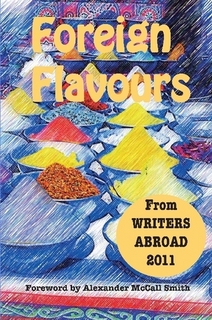
This week the virtual writers’ group, Writers Abroad, announced the publication of their second anthology Foreign Flavours, which contains 64 contributions, including 33 recipes, from ex-pat writers from around the world.
If you’re not familiar with the group, Writers Abroad is an online writing group, founded in 2009, which provides a forum for ex-pat writers to exchange ideas, views and news on writing and to offer support and constructive feedback on each other’s work (Writersabroad.com).
All proceeds from the sale of this book will go to The Book Bus, a charity whose aim is to bring literacy and the joy of reading to children in the developing world. And if that’s not enough for you, Alexander McCall Smith, acclaimed author of The No.1 Ladies’ Detective Agency Series, has written the preface.
The book is available now for $14.83 here.
The post Writers Abroad Announces Publication Of Their New Book (Hello Stocking Stuffer!) appeared first on The Expeditioner Travel Site.
]]>The post 18 Travel Writers Reveal Their 18 Favorite Travel Books appeared first on The Expeditioner Travel Site.
]]>
You know how there are some people who just give you really bad reading suggestions, like your friend’s mother, or Oprah? Their picks always involve stories about childhood molestation or teenage vampires, or both of those subjects combined, and all you really wish for is a good guide for travel reading to help get you through the doldrums this winter while you’re stuck at home.
Now imagine that your friend’s mother was Sara Wheeler, or that Oprah was Paul Theroux, which, I have to say, would both be really cool, because then you’d be getting some pretty fantastic suggestions. And if you’re into fantasies coming true, try exploring this list over at the Guardian of some of the best travel writers in the biz listing their favorite travel books of all time.
Some include Pico Iyer, who can’t say enough good things about Jan Morris’s Destinations: Essays from Rolling Stone (“Read her on Los Angeles, Manhattan or New Delhi and you’ll never want to read anyone else on those places again”), and Sarah Wheeler who loves Freya Stark’s A Winter in Arabia (“The book is a heady mix of hardship and luxury, scholarship and mischief, loneliness and intimacy, and the oppositions give the prose its strength.)”
For the full list, check out the Guardian‘s article here.
[Mekong Reading by andess/Flickr]
The post 18 Travel Writers Reveal Their 18 Favorite Travel Books appeared first on The Expeditioner Travel Site.
]]>The post Paul Theroux On How To Break Into Travel Writing (And Other Questions Answered) appeared first on The Expeditioner Travel Site.
]]>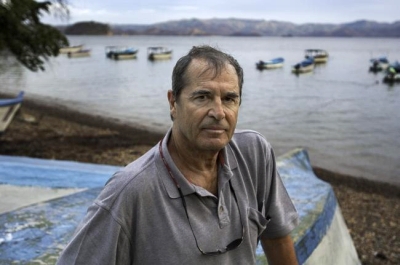
In case you missed it, celebrated travel writer Paul Theroux sat down for a couple hours with the UK Telegraph for a live Q&A with readers, and we’ve got your highlights here, including where Paul wants to die and his three hard-fast rules for travel.
*
Question: Would you care to name 3 basic rules of travelling?
Paul: Travel on the ground — avoiding air travel. Travel alone when possible. Keep notes. That’s it.
*
Question: If you had to choose one residence in which to spend the rest of your days would it be in Hawaii or Cape Cod? If it wasn’t in either of these locations where would it be and why?
Paul: In response to Mark: I have fantasies of checking out in a tiny village in rural Thailand attended by adoring villagers with chickens around, lying around, something like Mr Kurtz, except a lot jollier. But seriously, I love Hawaii and wouldn’t mind checking out there either.
*
Question: How would you define the difference between a tourist and a traveller?
Paul: The short answer, Jessica, is the tourist doesn’t know where he’s been and a traveller doesn’t know where he’s going but I also think that a tourist is under a time constraint, only has a week or two, where a traveller may have months to wander and improvise.
*
Question: Do you feel advances in transportation and technology have dampened the experience or now make the experience far more comfortable?
Paul: The best travel is probably not romantic or even much fun but is glamorous and enlightening only in retrospect. It’s not hard to get off the beaten track but once you are on it travel can be very hard – though always worthwhile.
*
Question: Do you have any advice for like minded individuals who are looking to break into the world of travel writing?
Paul: Patience, humility, a genuine interest in other people and an avoidance of writing about your health problems or how you’ve been delayed. No one likes to read about long waits or bad tummies. And it helps to be a passionate reader of everything – novels, history and travel.
*
Question: Where to next?
Paul: In my new book, The Tao of Travel, I list all the places that I would love to go, places I’ve never been, among them Greenland, Angola, Scandinavia, West Africa, many islands in the Pacific. I have the idea of going back to Africa and travelling up the west coast starting from Cape Town but I’d also like to write about the Northern Hemisphere, what I think of as The Cold World.
The post Paul Theroux On How To Break Into Travel Writing (And Other Questions Answered) appeared first on The Expeditioner Travel Site.
]]>The post You Should Read These Books Before You Travel To [Insert Country Here] appeared first on The Expeditioner Travel Site.
]]>
Before I head off on a trip, I love to read a few books and watch movies about that country. Sometimes it’s helpful, as was the case in reading Marquez before I traveled to Colombia, sometimes it leads to false expectations (are you telling me I came all way here to Barcelona and Penelope Cruz is not planning on beginning a torrid love affair with me?), but either way, it at least helps to address that obsession every traveler has ahead of a trip.
To help you figure out what to read ahead of your next trip, Lonely Planet put together this helpful (and exhaustive) list. For example, ahead of a trip to Argentina, LP suggests you stock up on “The Motorcycle Diaries” and “In Patagonia” (I’d suggest Borges too, but apparently LP is not as sadistic as me), and for France they offer up Edith Wharton’s “A Motor-Flight Through France” and “The Man who Married a Mountain.”
There are a few surprises here. How can any visitor to Vietnam (especially Saigon) not read “The Quiet American” before going? Or what about “Midnight’s Children” for India, or pretty much any Hunter S. Thompson for the USA?
[Photo by Willie Stark/Flickr]
The post You Should Read These Books Before You Travel To [Insert Country Here] appeared first on The Expeditioner Travel Site.
]]>The post On “On the Road” appeared first on The Expeditioner Travel Site.
]]>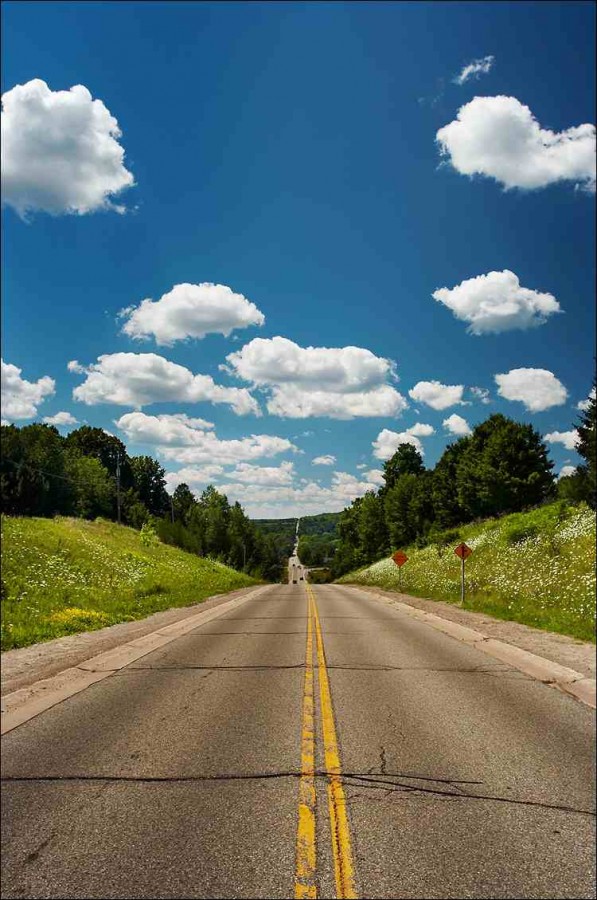
“I’ll be back in thirty minutes,” Stu said to me, his glazed-over eyes had that spark of craziness that fuels the worst and the best fires of humanity. Amid the rabble-rousing of a dimly lit Brooklyn bar, a tension released in Stu’s wake. Not because he was not likable or interesting, but as his intake of alcohol increased so did his intensity. Before he left he had been crescendoing until his eyes popped from their sockets as he wildly told his tales. The impromptu friends at our table began looking at him in the same way one looks at a sparking galore of electrical wires.
I wouldn’t know why he left until he returned.
When Stu had departed I turned to Matt Stabile, my editor at The Expeditioner, who seemed to breath a sigh of relief. I was in New York for the first time, up for the release party for the book The Expeditioner’s Guide to the World. It was my first time actually meeting one of my co-editors, the other editor was the infamous Montana outlaw, Jon Wick. For the last year the three of us had been putting together a book without having actually met each other. And my mother warned me about writing with strangers!
I’d met Stu earlier in evening at another bar. He joined a conversation that I had struck up with a woman seated alone at the bar. Stu succeeded in scaring the woman away and so he and I had left for another bar where we slowly brought smaller groups of Wednesday-night revelers to a single table. When Matt came, Stu had already made his transition from lively and interesting to intense and crazy.
“I think we should get out of here.” I said to Matt. Stu had now become a liability to my goal of meeting more people. He seemed to frighten strangers.
“Do you think he’s coming back?” Matt asked me.
“He said he’d be back in like thirty minutes. That was thirty minutes ago.”
In answer to the question, Stu entered triumphantly through the front door. In his hand was a paperback copy of Jack Kerouac’s On the Road.
Had he left just to retrieve that? Earlier in the night I had mentioned that I was re-reading On the Road, and I was planning to write about it. Seeing Stu, a NYC transplant from Seattle carrying the book with a reverence reserved for the Bible or Koran, made some understanding about the book click. I realized how alive the book still is. If the book were a dance, then it is one that is still being intrepidly danced wherever youth and longing still seize the day.
Stu’s intensity seemed to inhabit some part of some vision held by the Beat Generation—a vision today’s travelers still see. That wildness in Stu’s eyes is the same passion I imagine Kerouac’s Dean Moriarty had that drove him and those he enthused to travel back and forth from East coast to West coast.
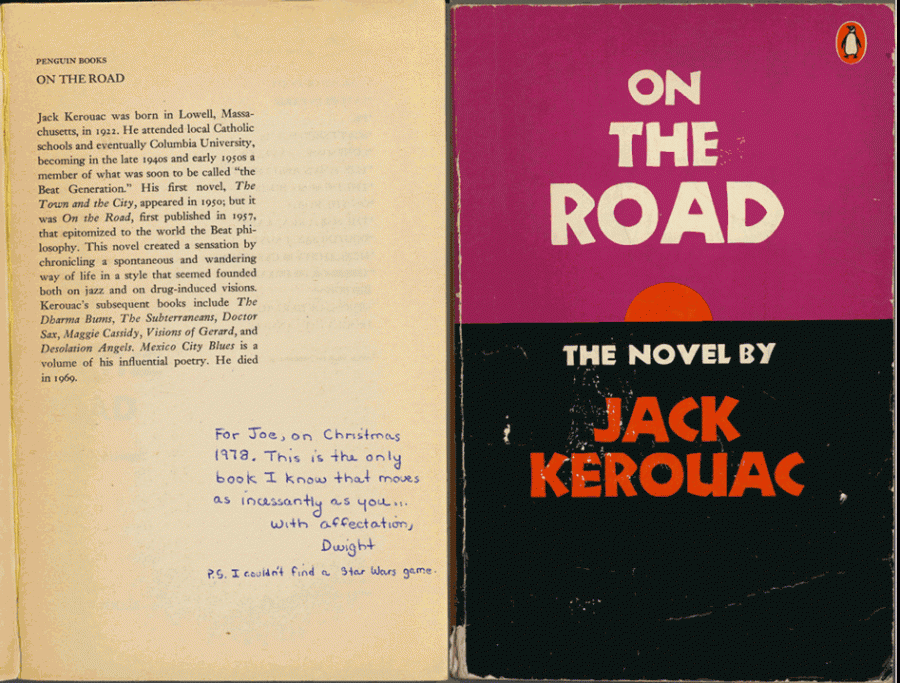
Kerouac’s book is based on events he experienced. His fictional identity, Sal Paradise, asks himself, “What do you want out of life?” and then answers, “I want to take her and wring it [life] out of her.” Strong words, but Stu seemed to be doing that very thing he passionately traveled through what for many was just another Wednesday night. For Kerouac travel was not just a part of life, it was life at its most earnest.
“The road is life,” Sal reflects at one point. “The road must eventually lead to the whole world…There’s always more, a little further—it never ends.”
At one point Sal is asked by a sheriff, “You boys going to get somewhere, or just going?” Sal does not understand the question still but reflects, “It was a damned good question.”
Nothing about On the Road is sugar-coated. It is as real an account of traveling, and the struggle to define meaning in it, as exists in print. It’s filled with struggles, failed attempts at finding un-fleeting happiness, jadedness, hope, discovery, disaster and longing.
For a book about going, it never really seems to arrive anywhere definitive, and maybe it is onto something there. It is less about the geography and more about the people inhabiting it. For if un-traveled-to places were not filled with unmet people, would there be as much reason to go? You’ll meet some “crazy” people along the way. When you do, be sure to contemplate if those same people are perhaps the sanest among us. Perhaps it’s they who have cast aside the invisible shackles that limit the rest of us. If you’re really lucky, they will leave the bar only to return carrying a copy of Kerouac’s masterpiece—this perfect combination between madness and meaning is still up for grabs for anyone who is sincerely seeking.
What On the Road makes me realize more than anything is that travel is often the search for things that we did not know we were looking for. It’s about taking part in the ongoing dance of the world, using the limited time that we all have to participate before leaving the dance floor to let younger bodies sweat out the night.
If you’ve read it, read it again and see what newness you find. If you have not read it, what the dickens are you doing reading obscure online travel writing when one of the greatest reads of your life is still out there undiscovered? Go buy the book. Oh, and buy The Expeditioner’s Guide to the World, royalties go to help pay the editor’s bar tab—as good a cause as any my friends.

About the Author
 Luke Maguire Armstrong lives in Guatemala directing the humanitarian aid organization, Nuestros Ahijados. His book of poetry, iPoems for the Dolphins to Click Home About (available for sale on Amazon.com) is especially enjoyed by people who “don’t read poetry.” (@lukespartacus)
Luke Maguire Armstrong lives in Guatemala directing the humanitarian aid organization, Nuestros Ahijados. His book of poetry, iPoems for the Dolphins to Click Home About (available for sale on Amazon.com) is especially enjoyed by people who “don’t read poetry.” (@lukespartacus)
The post On “On the Road” appeared first on The Expeditioner Travel Site.
]]>The post Q&A: An Irreverent Interview With David Farley appeared first on The Expeditioner Travel Site.
]]>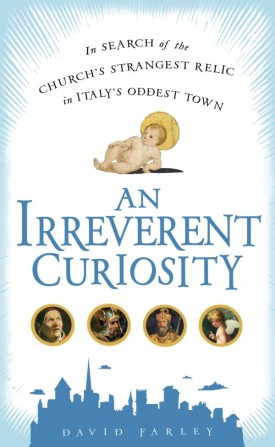
David Farley’s Quest to Find the Carna Vera Sacra — The Foreskin of Christ
By Luke Armstrong
We travel for different reasons. The sun and sand. Adventure. To discover something new. To leave something old behind. To conquer fears. To conquer mountains. To learn. To drink. To sober up. To experience other cultures. To find the foreskin of Christ?
In David Farley’s recently released book, An Irreverent Curiosity, that’s exactly what took him on a yearlong quest in Calcata, Italy. Before it became an excommunicable offense to talk about, this relic was a Church superstar. Early on, it attracted droves of faithful pilgrims, and then, controversy. The controversy eventually led to its mysterious disappearance in 1983, or as Farley’s research uncovers, was it really 1986?
The last known resting place of the relic, Calcata, Italy, is where Farley begins his quest for answers to the current whereabouts of the infamous relic. Despite a subject that could easily be a mockery slam-dunk, what the book is not, is irreverent towards the relic or its place in Church history. It’s as good as travel writing gets. A quest. A mystery. A well-researched exposé on eccentric Calcata, Church history and Italy that is easy to read and hard to put down.
If Indiana Jones could write well (I suspect he can’t), this book is in the vein of what he would be publishing. Intrepid travelers, take notes. Farley’s ability to open closed doors abroad is relevant to any foreigner finding frustration in a far-off land. Following is an interview with Farley about his search for the “Church’s strangest relic in Italy’s oddest town.”
 The Expeditioner: Your book is not just a travel book, but it’s a quest book, detailing your yearlong quest in Italy to find the holy prepuzio, or in layman’s terms, the holy foreskin of Jesus. How is questing for something different than just simply traveling somewhere?
The Expeditioner: Your book is not just a travel book, but it’s a quest book, detailing your yearlong quest in Italy to find the holy prepuzio, or in layman’s terms, the holy foreskin of Jesus. How is questing for something different than just simply traveling somewhere?
Farley: A lot of traveling consists of either aimless wandering or checking sites and experiences off a list, which isn’t a terrible thing, b ut putting yourself on a quest instantly makes you part of a story with a beginning, middle, and an end, creating a narrative arc and a resolution. Whether you choose to write about it is another story. It instills a bit more significance to one’s travels and takes the traveler to parts of the city/country/place that they would never think to visit.
The Expeditioner: Your title, An Irreverent Curiosity, made me assume that your book was not going to be extremely reverent towards the Church’s treatment of relics. Considering the subject matter — finding Jesus’ lost foreskin — as written by a former Catholic, it would not be difficult to take a mocking, sarcastic tone. Though the Church might not agree, I thought you wrote fairly and respectfully. At times it seems that you treat your quest to find the relic with the same reverence that was shown to it during the Middle Ages. Was this always your intentional when you decided to write about it? Basically, why is your book respectfully devoid of any penis jokes?
Farley: Thank you for pointing that out. I’ve done a lot of press — radio interviews and Q&A’s online — but almost none of it has been with Christian publications or radio shows. They read what it’s about and immediately think I’m making fun. The fact is, I didn’t have to make the obvious puns and jokes about the subject matter. One could view my book, from the first to last page, as an implicit dick joke. But that was never my intention. I respect history and the worldviews of the people that came before us and I wanted that to come through in the book. It fascinated me most of all that this relic, once a player in the spiritual landscape of medieval Europe, was now unknown and no longer appreciated.
 The Expeditioner: One of the things I liked the most about your saga to find . . . okay, I´m just going to say it . . . a preserved part of Jesus´ penis, was the uniqueness of your travel saga. Looking for Jesus’ foreskin is not something that Lonely Planet has on any top ten list. It’s certainly not something I know of anyone else doing. The twenty-first century is perhaps not the best century for the pioneering spirit. There are no new lands to discover, fewer virgin mountains to climb, and simply less things to discover. Let’s be real. Who hasn’t summited Everest? Who hasn’t flown solo around the world in a hot air balloon (yawn)? Were you intentionally looking for a something novel to travel for, to quest for, or did the foreskin unintentionally pick your interest?
The Expeditioner: One of the things I liked the most about your saga to find . . . okay, I´m just going to say it . . . a preserved part of Jesus´ penis, was the uniqueness of your travel saga. Looking for Jesus’ foreskin is not something that Lonely Planet has on any top ten list. It’s certainly not something I know of anyone else doing. The twenty-first century is perhaps not the best century for the pioneering spirit. There are no new lands to discover, fewer virgin mountains to climb, and simply less things to discover. Let’s be real. Who hasn’t summited Everest? Who hasn’t flown solo around the world in a hot air balloon (yawn)? Were you intentionally looking for a something novel to travel for, to quest for, or did the foreskin unintentionally pick your interest?
Farley: You mean, it’s not on any Lonely Planet lists . . . yet. No, in all seriousness, what attracted me to such a bizarre idea was the fact that we are in the twenty-first century and this long-time aspect of western spirituality — relic veneration — is slowly, quietly dying. I’m interested in the history of spirituality but I’m more interested in documenting aspects of world culture that are not surviving modernism. So this was less of a literal exploration than a documenting of a piece of history that has almost been lost to us.
The Expeditioner: After reading your book, I’ve decided that there is not enough “questing” going on today. Do you agree? What can run of the mill travelers do to become intrepid questers?
Farley: I agree. I’d start with figuring out where your interests lie. Then arrive in a city and let those interests guide you. If you’re in Tokyo, put yourself on a quest to find, say, the most unusual sushi or some food you can’t get back home, like fugu (the potentially lethal blow fish). Or just pick some random thing—creepy vintage ventriloquist dummies, for example—and try to find one. You’ll end up in some interesting off-the-radar places and meeting interesting people. In a way, it’s a travel enhancer. Cialis for travel.
The Expeditioner: The Vatican certainly did not go out of their way to help you on your quest. Complete dismissal of anything to do with you and your mission seems a good way to describe their presence. Have you received any feedback, positive or negative, from anyone in the Church about your book?
Farley: Like their policy on the Holy Foreskin itself, the Church’s reaction to my book has been silence.
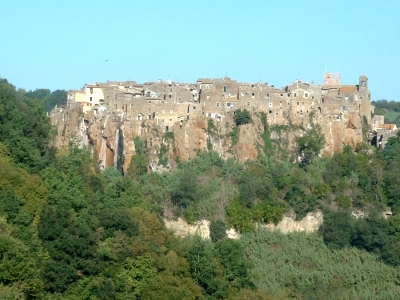 The Expeditioner: Travel writer critic Edward Marriot thinks that we have “reached the moment when travel writing [cannot] go any further.” He goes on to say that “[w]ith many young writers of travel turning to history, biography or fiction, the genre has never felt so redundant.” What do you make of Marriot´s comments? Has travel writing really reached a critical mass?
The Expeditioner: Travel writer critic Edward Marriot thinks that we have “reached the moment when travel writing [cannot] go any further.” He goes on to say that “[w]ith many young writers of travel turning to history, biography or fiction, the genre has never felt so redundant.” What do you make of Marriot´s comments? Has travel writing really reached a critical mass?
Farley: Nah, travel writing will always be around. Like anything that sustains itself, the genre will change with the times and could look very different in a few decades. That said, the further technology may take us off the road or out of nature, I can very much imagine travel writing entering a retro phase, with writers doing things the “old” way, like getting on train and writing about the journey. But these days, in this age of diminishing attention spans, documenting long journeys hardly captures the interest of readers. So, in my humble opinion, travel books should have an extra hook to them, something that will transcend the travel genre.
The Expeditioner: You spent a year living in Calcata. What’s the difference between living long term in a place, and learning the language as opposed to quick trips.?
Farley: I’ve also lived in Rome, Prague, and Paris and besides the obvious—making new friends, learning the language, knowing your way around—you can really get underneath the place and understand how it ticks, how the culture affects quotidian activities. Traveling this way is a gift we give ourselves that no one will ever be able to take that away from us afterward.

About the Author
 Luke Maguire Armstrong lives in Guatemala directing the humanitarian aid organization, Nuestros Ahijados. His book of poetry, iPoems for the Dolphins to Click Home About (available for sale on Amazon.com) is especially enjoyed by people who “don’t read poetry.” (@lukespartacus)
Luke Maguire Armstrong lives in Guatemala directing the humanitarian aid organization, Nuestros Ahijados. His book of poetry, iPoems for the Dolphins to Click Home About (available for sale on Amazon.com) is especially enjoyed by people who “don’t read poetry.” (@lukespartacus)
The post Q&A: An Irreverent Interview With David Farley appeared first on The Expeditioner Travel Site.
]]>The post Road Trip: Lonely Planet Style appeared first on The Expeditioner Travel Site.
]]>
Summertime means road trip time, and Lonely Planet is helping you out by giving away free — one every week — PDF copies of their themed itineraries ahead of the release of their book, USA’s Best Trips: 99 Themed Itineraries Across America (oh, to be that disappointed 100th road trip that just missed the cut, I feel for you). As a side-note, I recently took a road trip to Canada and, without having a plug-in for my iPod, was forced to listen to the radio the entire way. Have you listened to the radio lately? Needles to say, I bought an iPod converter promptly upon arriving at my destination.
Head over to Lonely Planet’s Facebook page to download itineraries already available including Route 66: Monitoring the Mother Road, Pacific Northwest Grand Tour and New Jersey Diners: Open 24 Hours, and keep an eye out for upcoming itineraries, 60 Lighthouses in 60 Hours, Green Chile Adventure, Skyline Drive to the Blue Ridge Parkway, Up the Inside Passage, Wet & Wild West Coast, Tripping Through Grand Teton & Yellowstone, and Lake Lovers’ Trail.
The post Road Trip: Lonely Planet Style appeared first on The Expeditioner Travel Site.
]]>The post Top 100 Travel Books Ever, According To Everyone appeared first on The Expeditioner Travel Site.
]]>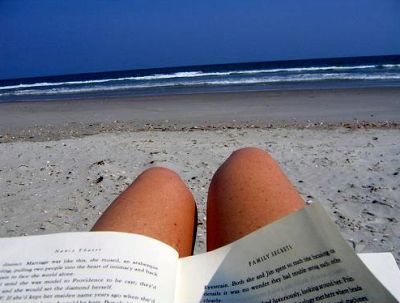
I love lists. 25 best restaurants in New York City. Top 10 movies of the year. Best morning cereal cartoon characters (and, yes, the answer is Sonny the Cuckoo Bird, don’t ask why). The problem I have with lists, and probably the problem that most people who have a tinge of OCD have with lists, is that a list isn’t a helpful suggestion or guide as to the author’s insights. Rather, a list is a challenge, one that must be conquered by eating, watching, listening, or read methodically through until each point is ticked off.
Which is why it’s almost better to come across one like World Hum’s “The 100 Most Celebrated Travel Books of All Time,” a list so daunting and time-consuming that you can feel comfortable checking out with nary a thought in sight of tackling in any reasonable amount of time (it’s kind of like if Usain Bolt knocked on my door here in Brooklyn and challenged me to a friendly race around the block: it’s not happening).
What’s nice is that this list is actually culled from 15 other compendiums, giving you an idea as to the strongest selections (Paul Theroux’s The Great Railway Bazaar made it to all but 15 of the lists; Eric Newby’s A Short Walk in the Hindu Kush made it on 8). Any thoughts, concerns, outrages? Any problem with Eat, Pray, Love being on any list that includes Fear and Loathing in Las Vegas, A Moveable Feast, or The Motorcycle Diaries? Is Three Cups of Tea too new to be on a list like this? Remind you how Seven Years in Tibet may have been Brad Pitt’s best movie?
The post Top 100 Travel Books Ever, According To Everyone appeared first on The Expeditioner Travel Site.
]]>The post Three Cups Of Tea: The Power Of One Person appeared first on The Expeditioner Travel Site.
]]>
I have a bookshelf full of adventure stories, young and old, travel tales from every corner of the earth, and tattered guidebooks from where I’ve been. I’m not the kind of person that likes clutter, but books I hold onto. Maybe it is a memorial of sorts. I like to think it is a testament to possibility.
None of those books sitting on my shelf is the best seller Three Cups of Tea. Nope. That book is nowhere to be found. The reason for its absence isn’t that I haven’t read it. I’ve read it, then lost it, then bought it a second time just to read it again. It’s simply the best book I’ve read in years. The reason it’s not on my shelf is that it’s the one book I’ve lent out so many times I’ve simply lost track of it. Somewhere, I believe in the hands of my friend in Cape Town, is the second worn copy with my name on the inside cover. It’s just so good, gripping, inspirational that I feel the need to pay it forward.
The story of Greg Mortenson and his Central Asia Institute is one of the world’s most powerful. A climber, in the wake of a wrong turn descending Pakistan’s K2 in 1993, stumbles into a village willing to help out the struggling foreigner. He promises to return the favor in the shape of a school. Since then he has dedicated his life to the building of schools, over 60 now, in some of the most remote regions of Pakistan and Afghanistan, often times with people Americans believe are enemies. His books, the latest Stones into Schools, have helped establish the CAI and a program called Pennies for Peace, which have collectively helped in the education of over 60,000 children.
What have you done lately?
In an article over at Worldhum, I was reminded of why I, and so many others, gravitated towards this story. Greg advises, when traveling, to:
[S]pend at least one day a week doing something a little different than what’s on the rest of your itinerary. Spend some time in a local café. Get to know somebody. Go visit a school. It’s uncomfortable for people at first, but often people say that’s the most significant part of the trip. [When you return home] try to continue just one of your relationships that you made on your trip.
His response to a question about the changes he’s seen as a result of this work is particularly poignant:
the changes I see in Afghanistan and Pakistan are, women who have an education are much less likely to encourage their sons to get into violence or into terrorism. I’ve seen that happen. The Taliban’s primary recruiting ground is illiterate or impoverished society.
One average person, and one failed attempt at climbing a mountain, has blossomed into changing lives. Changing lives for the better. Changing the world. With all of the negative news forced upon us, I feel almost honored to share a story like this. That is why you won’t find this book on my shelf.
The post Three Cups Of Tea: The Power Of One Person appeared first on The Expeditioner Travel Site.
]]>